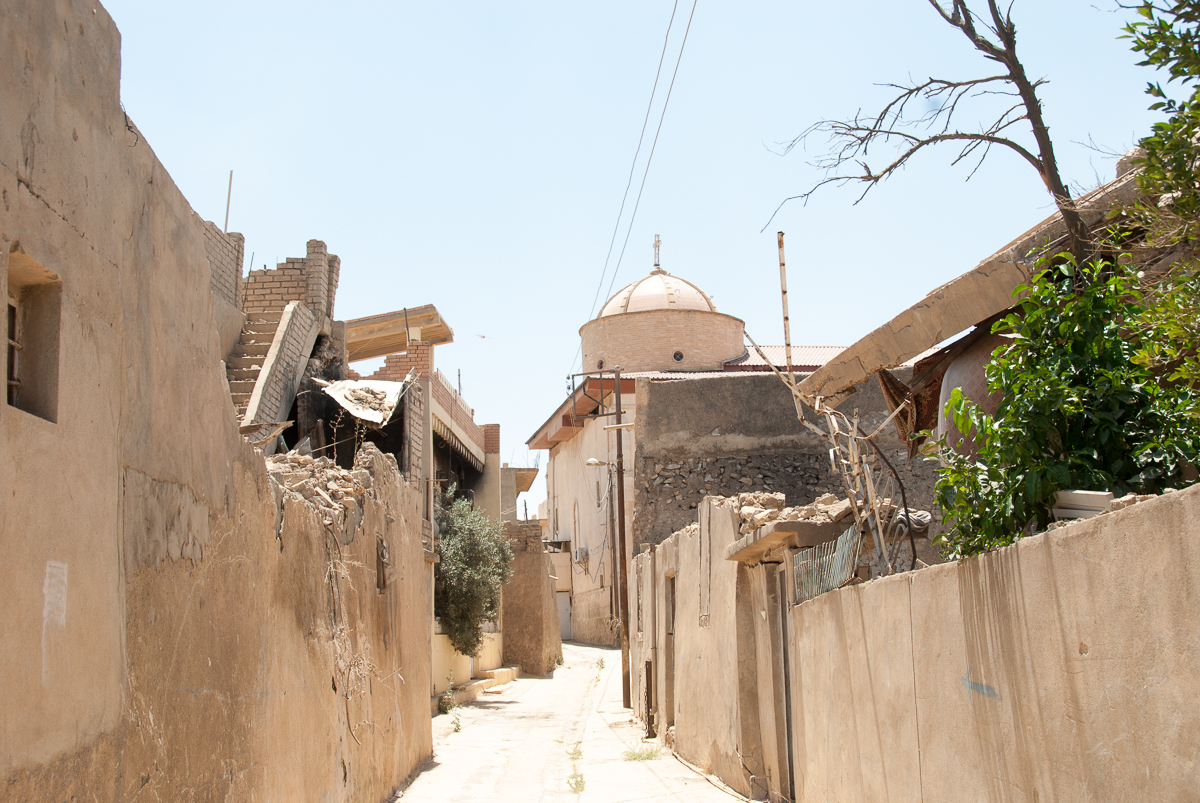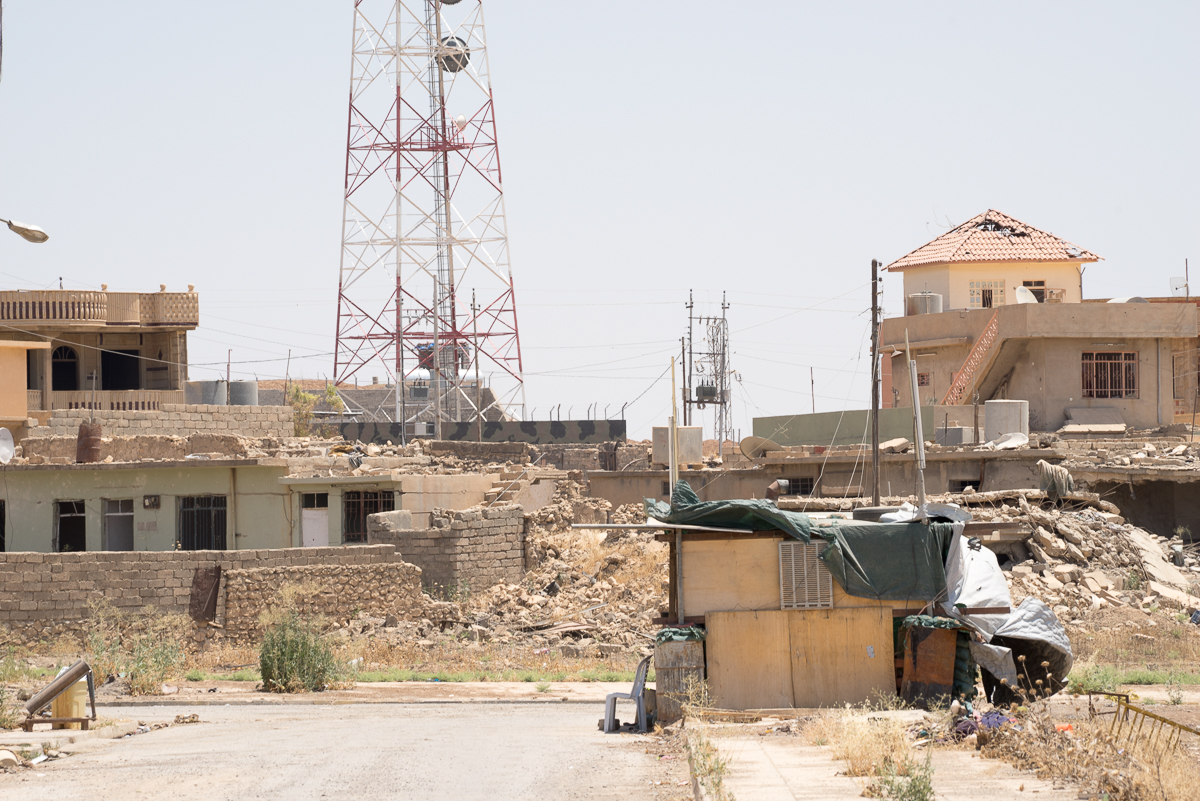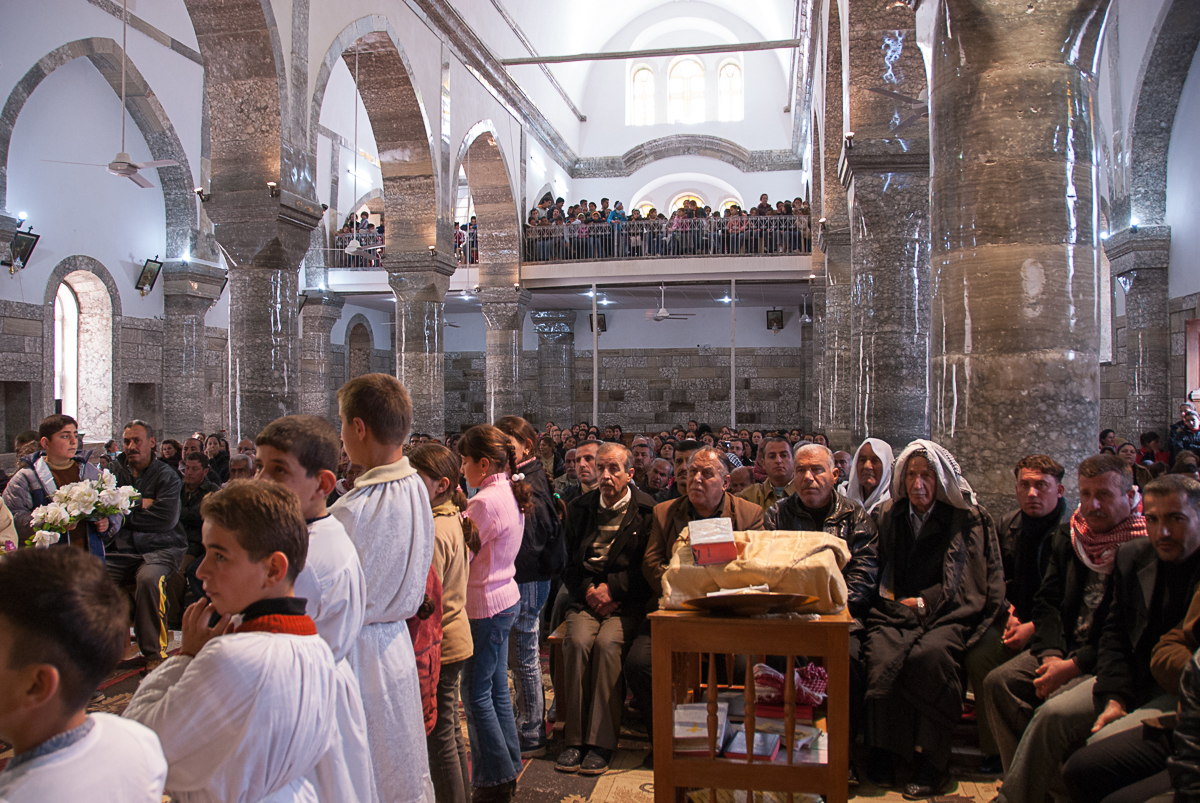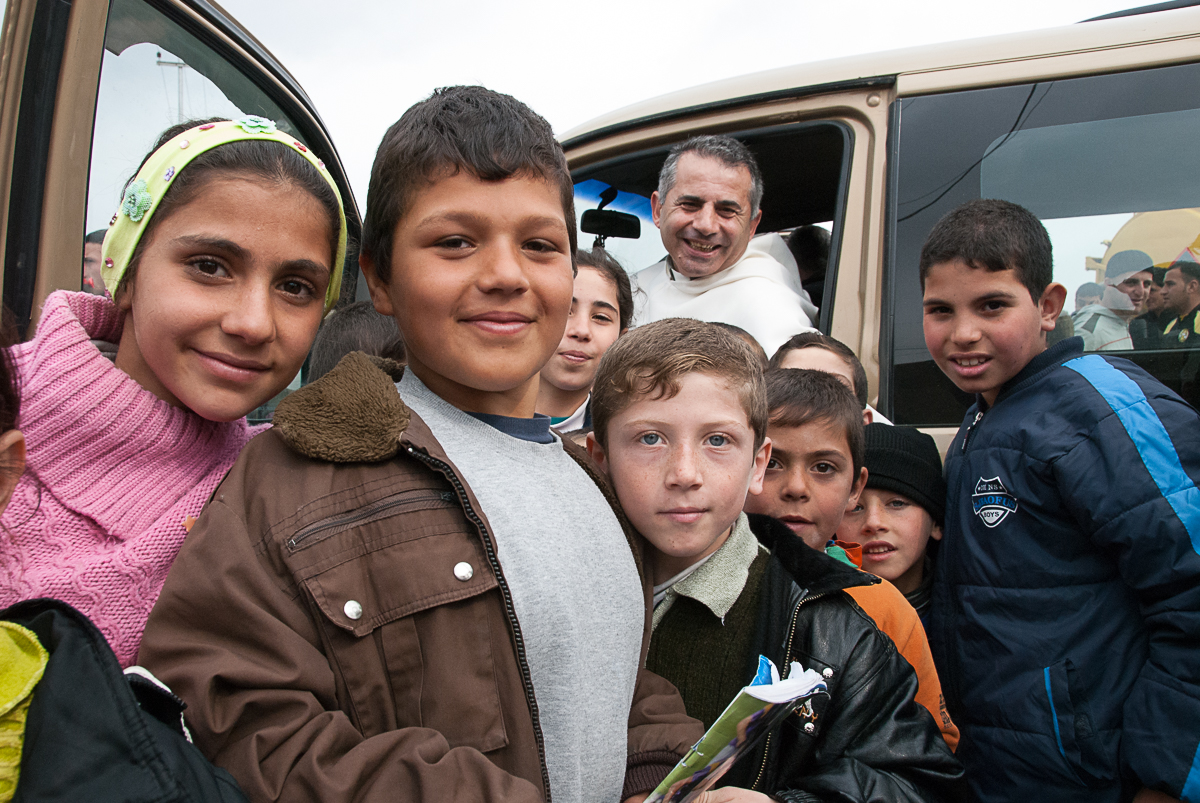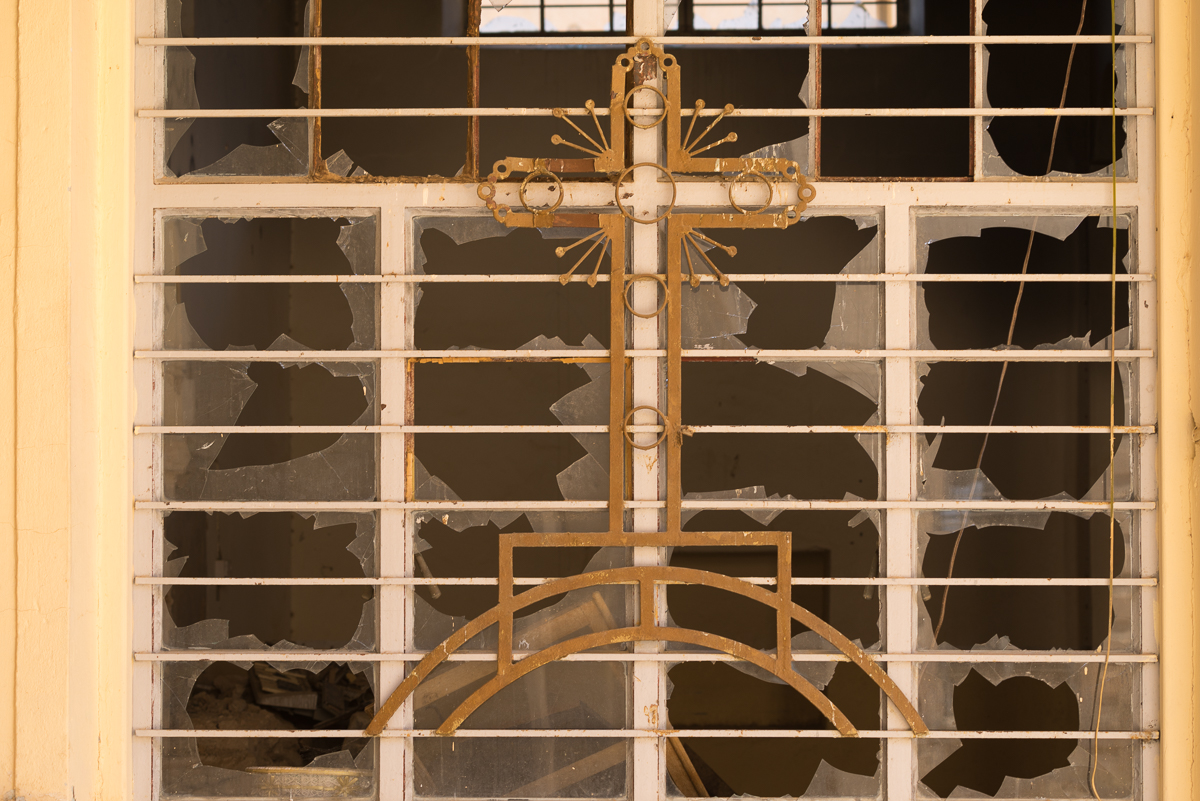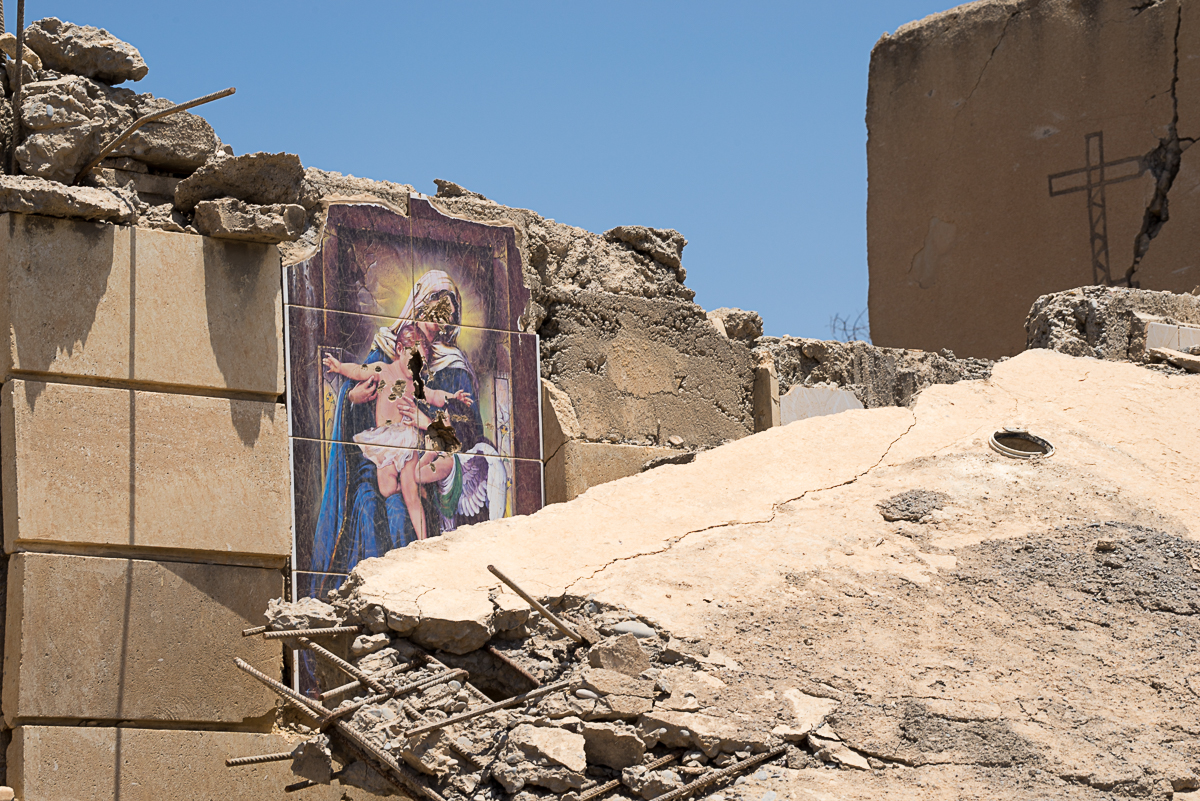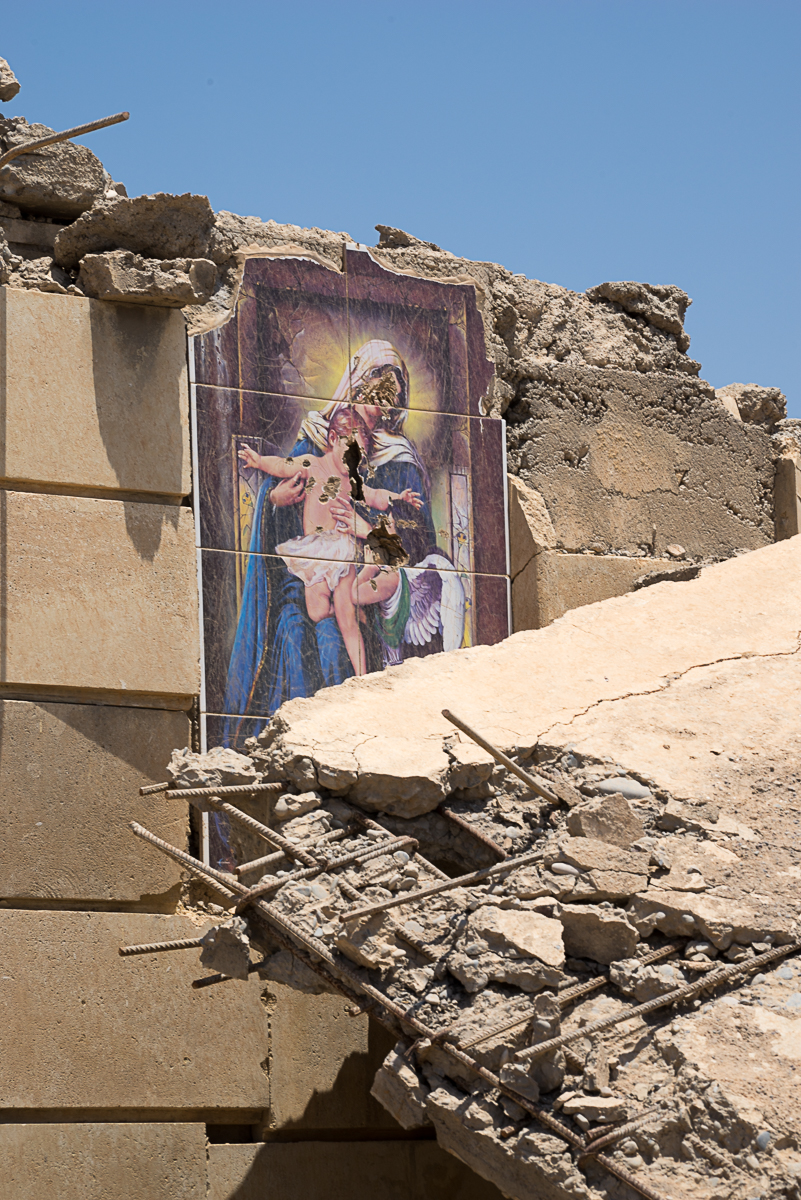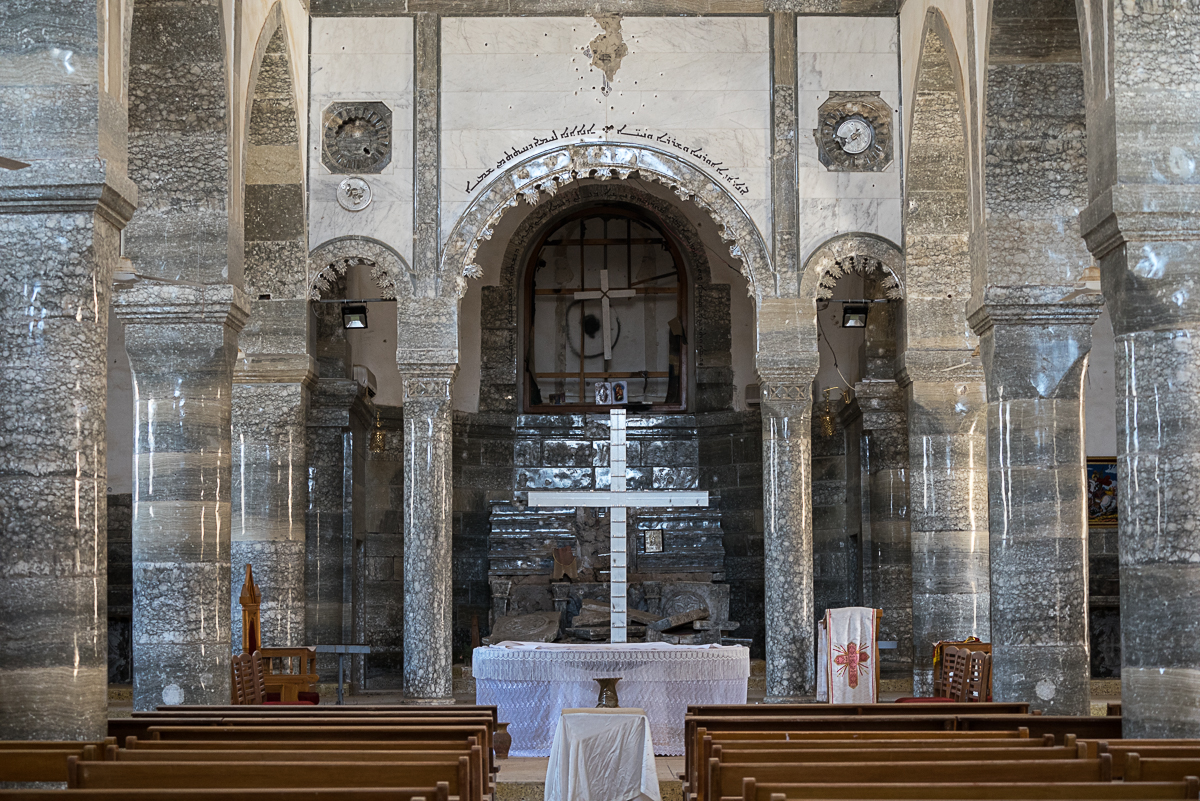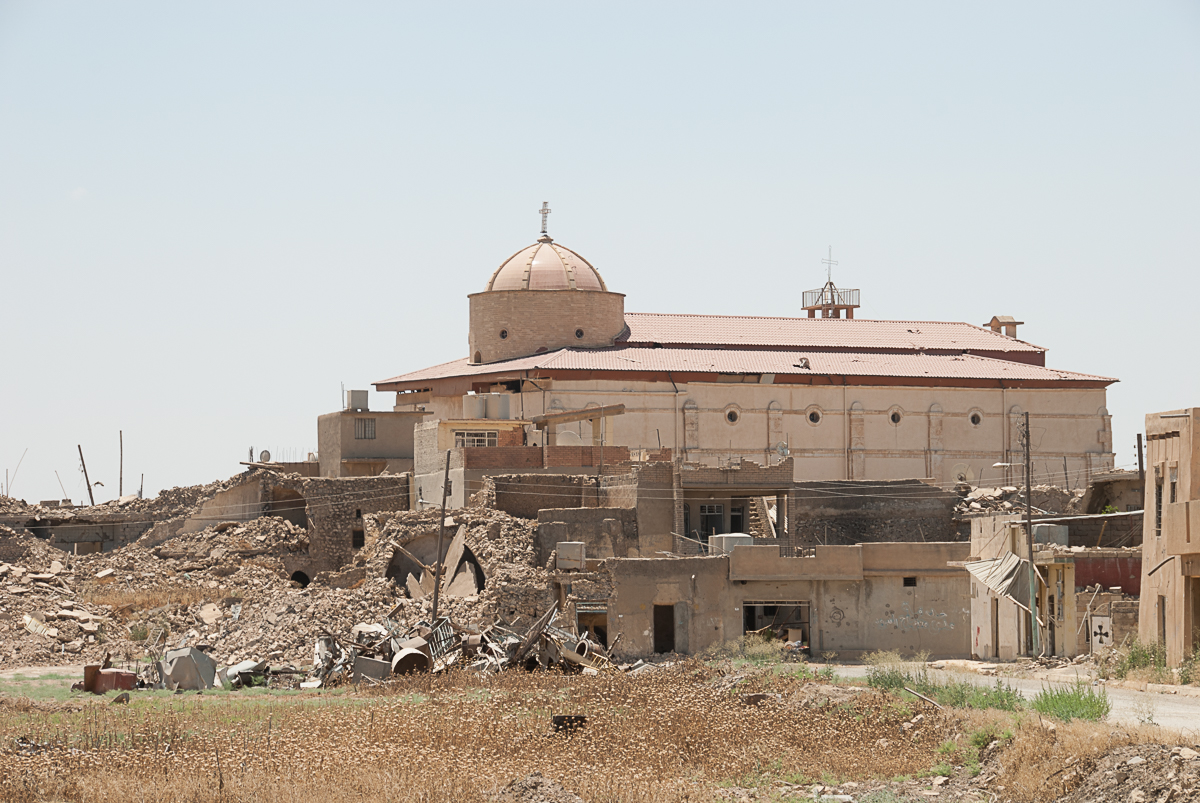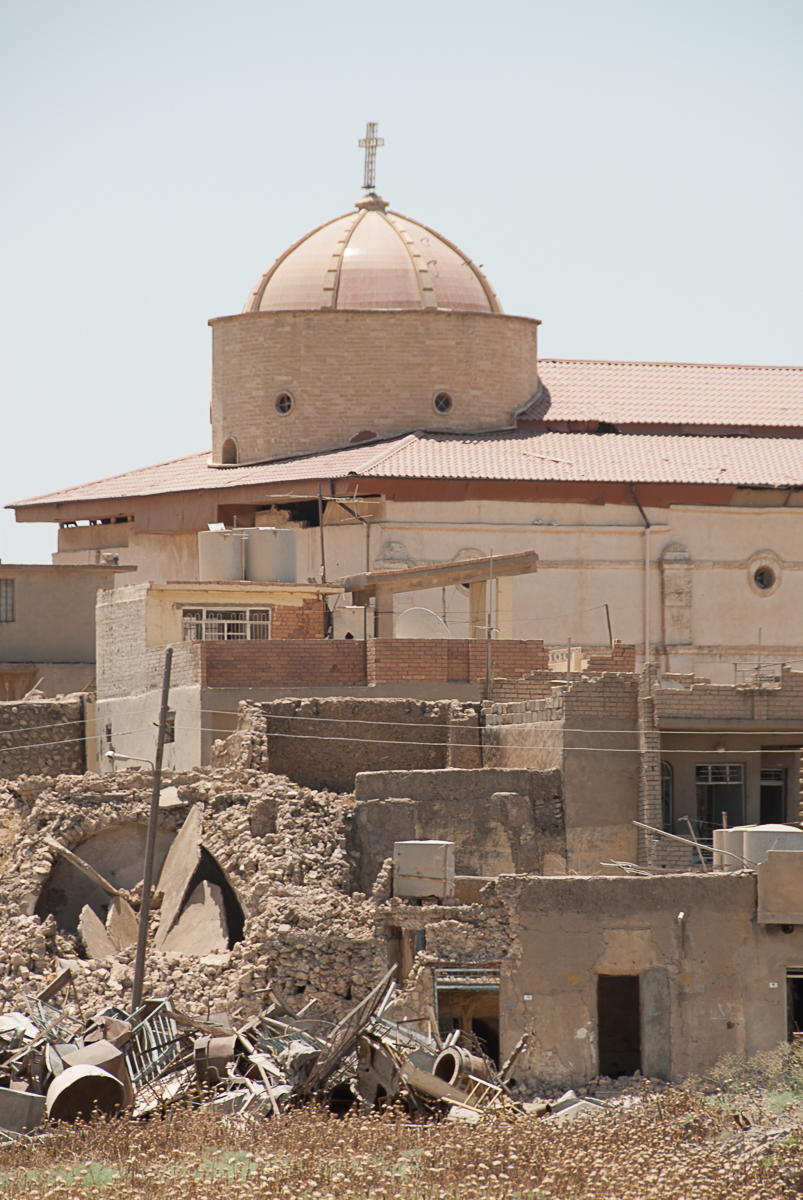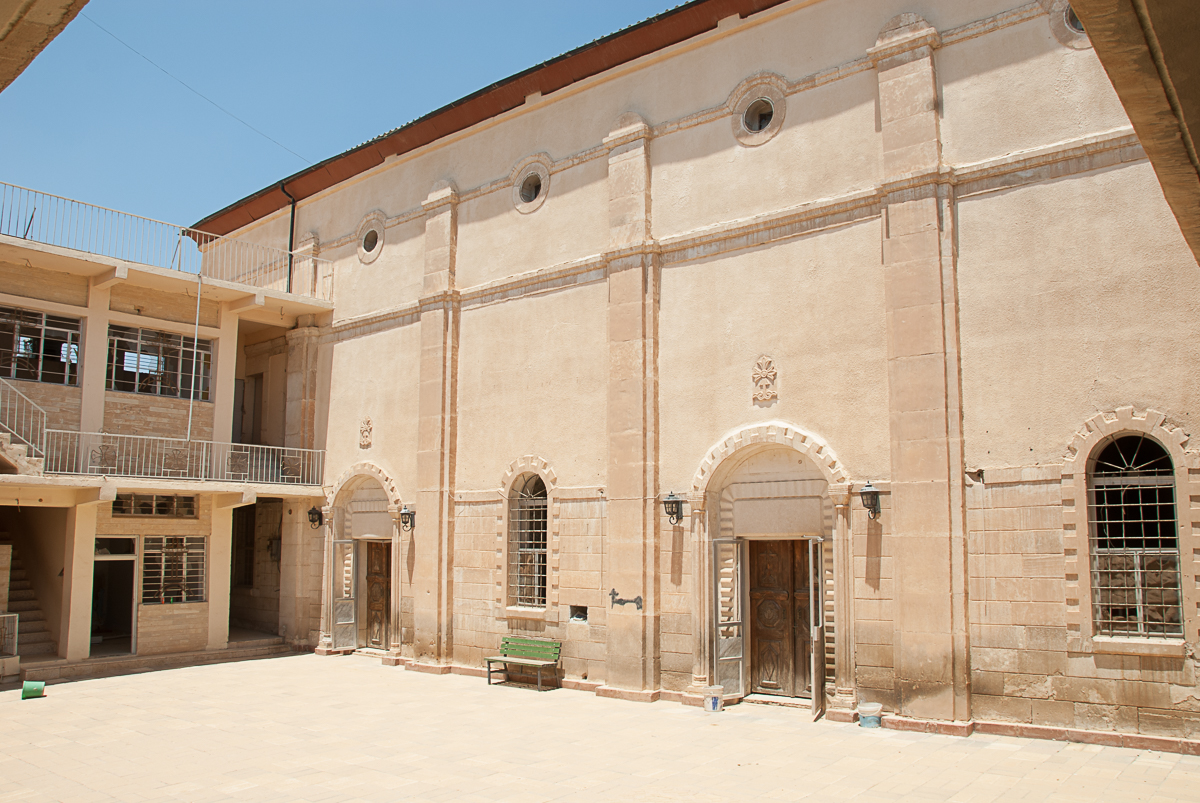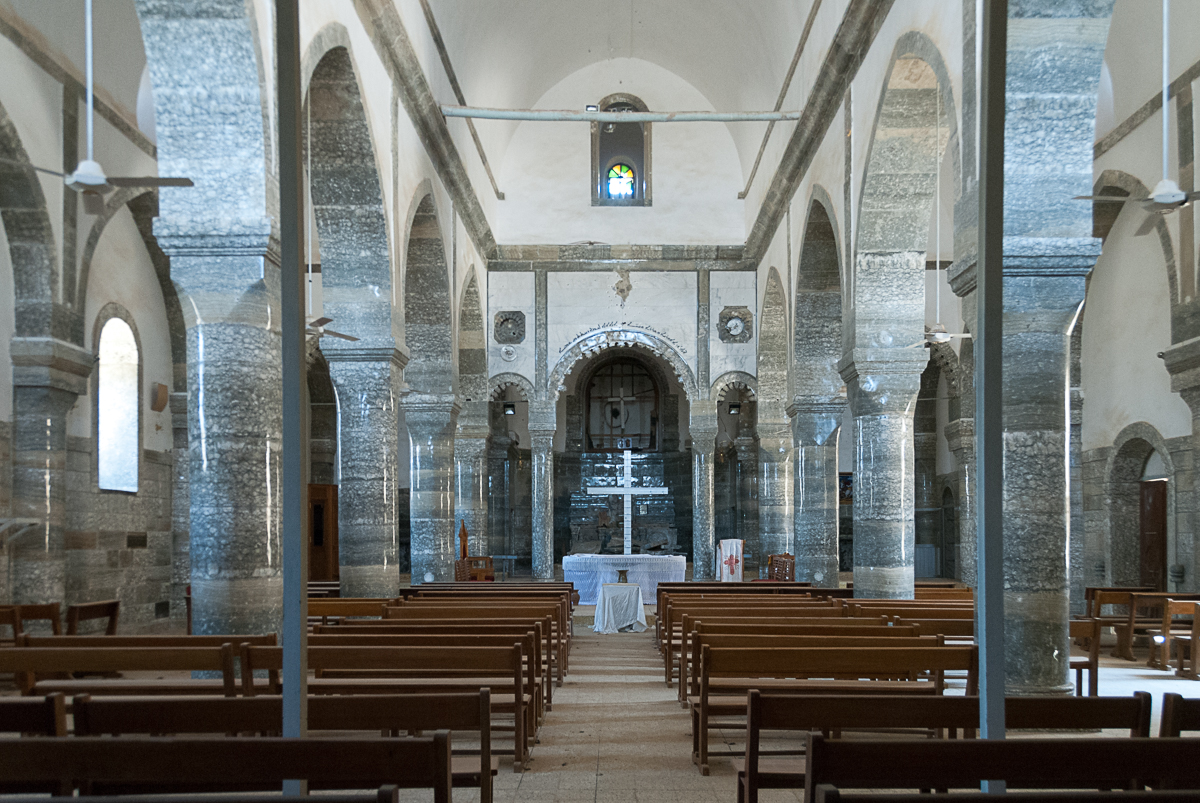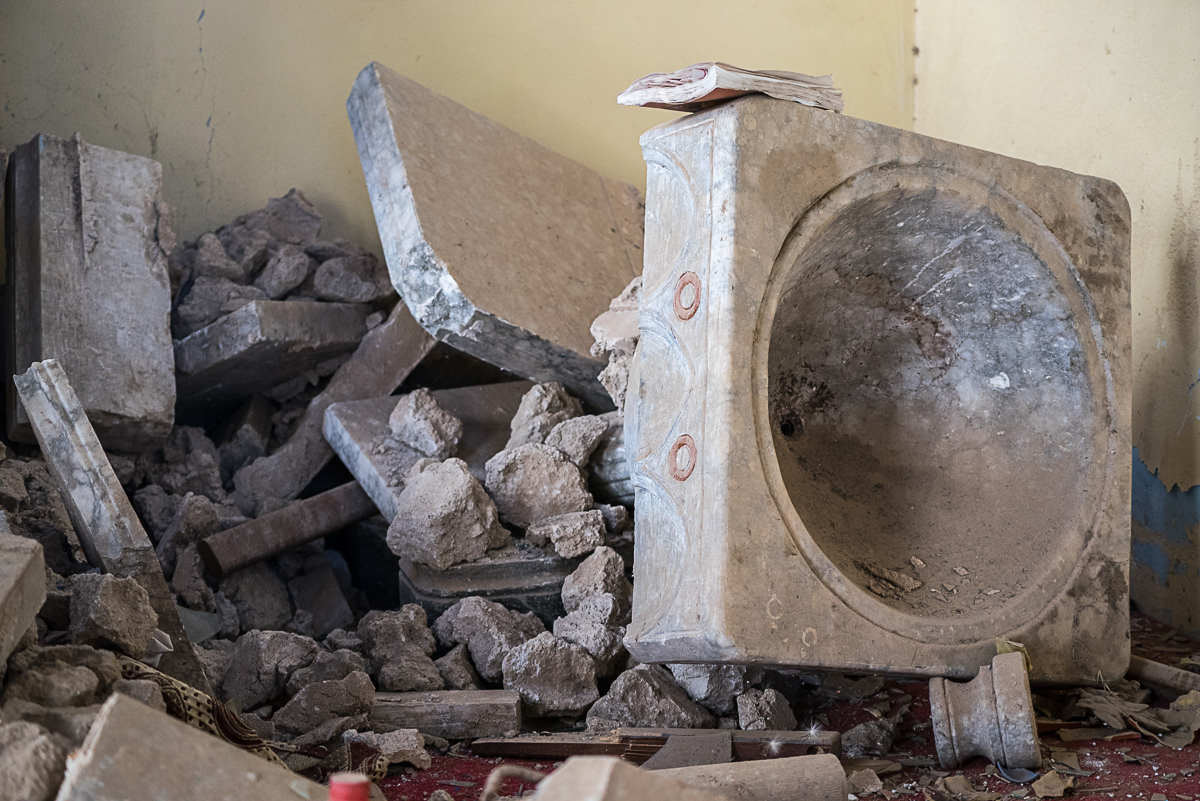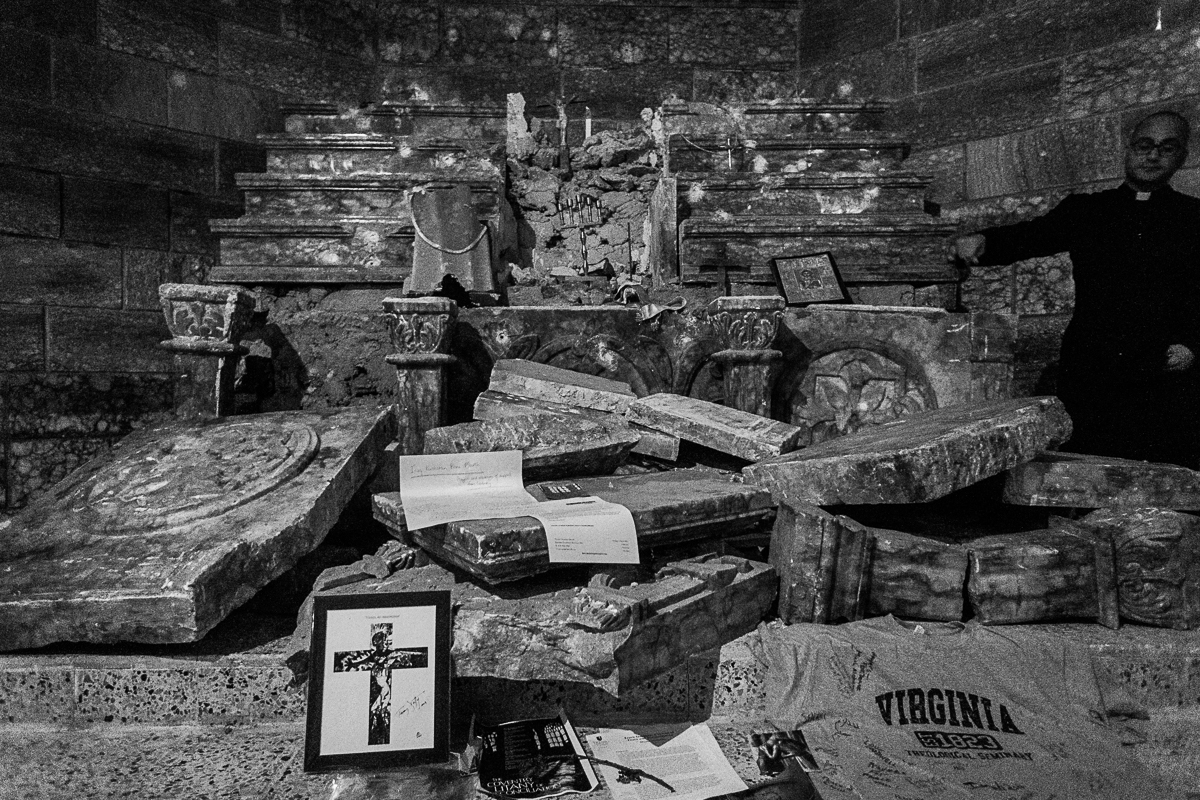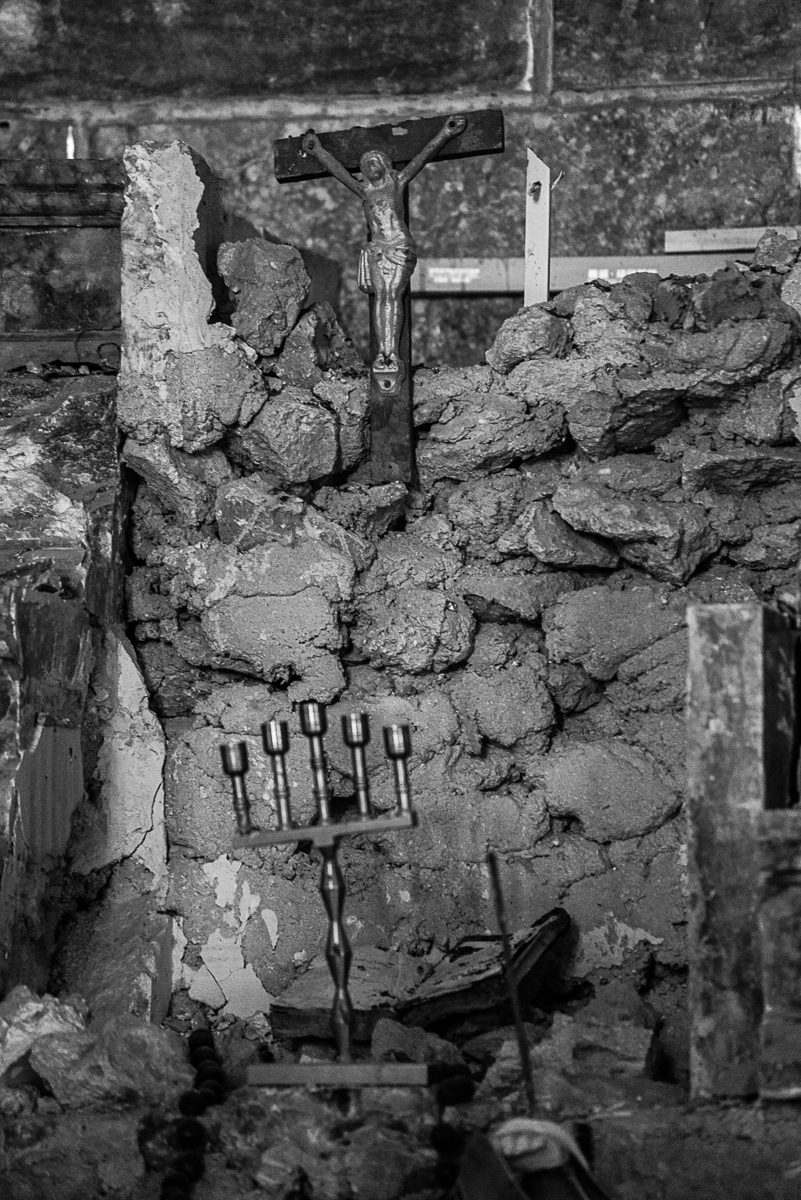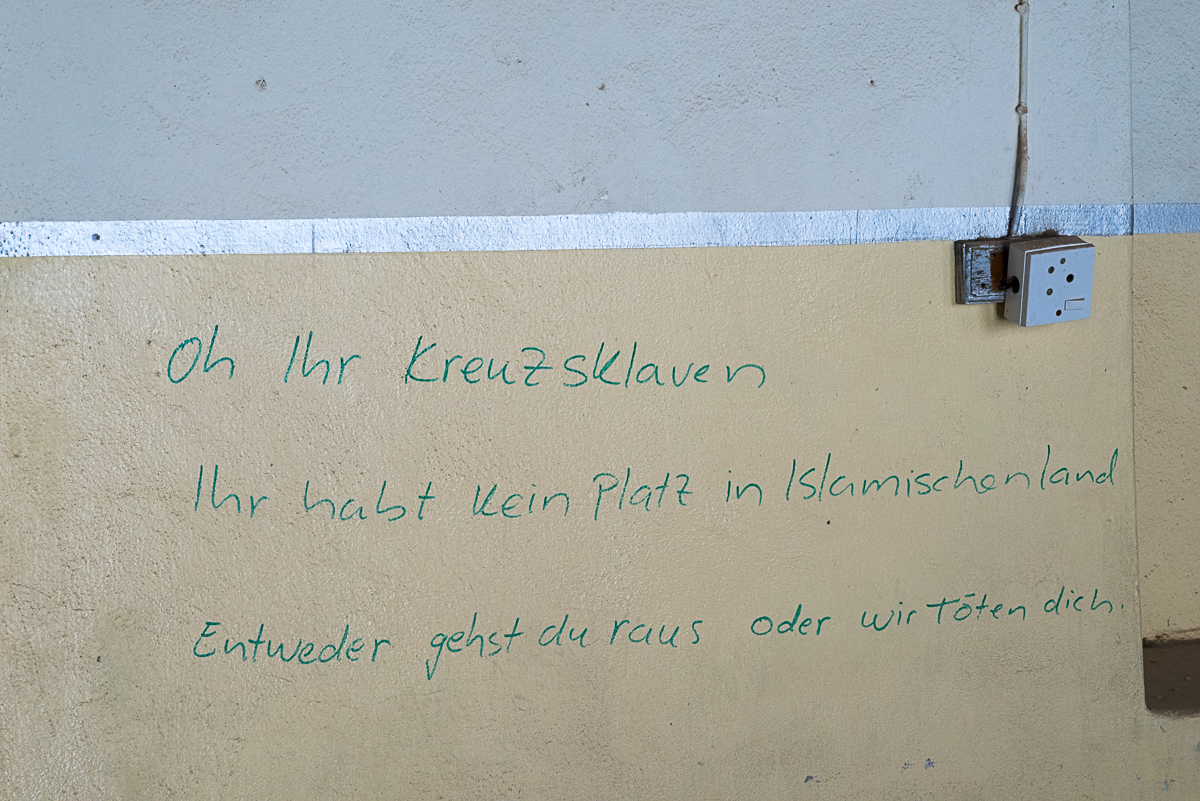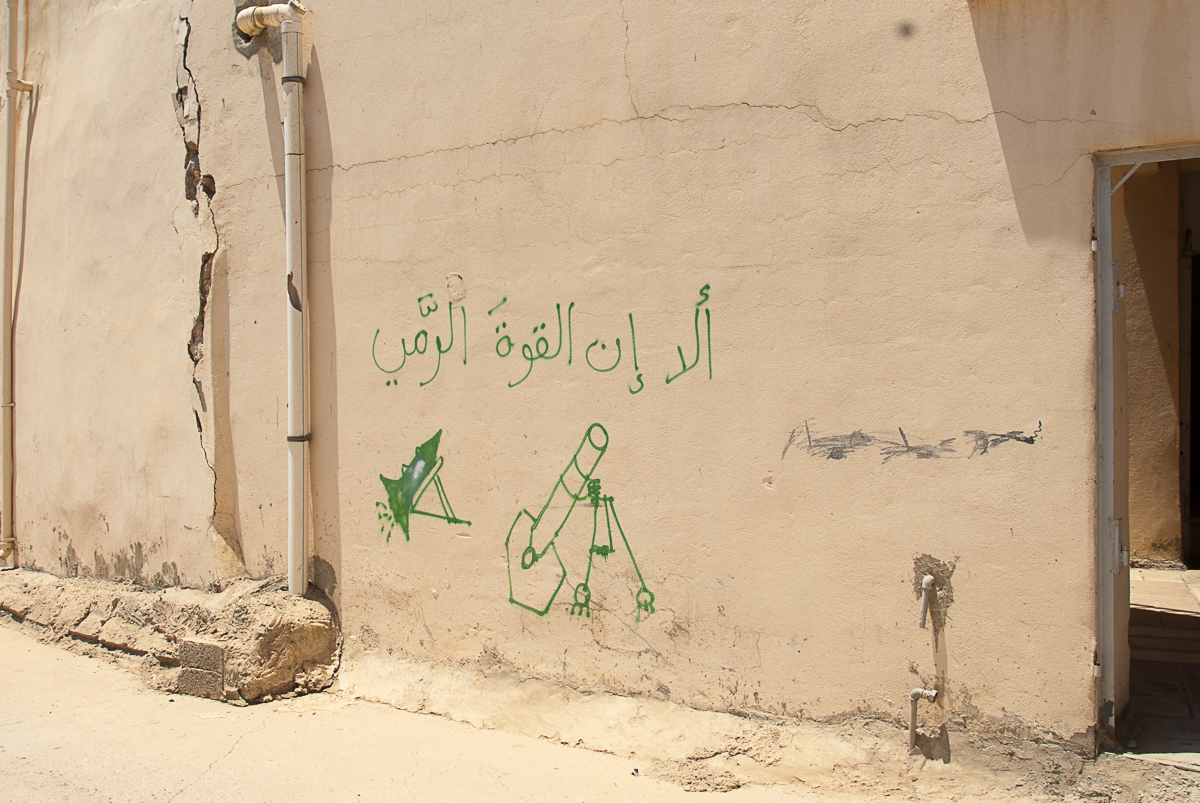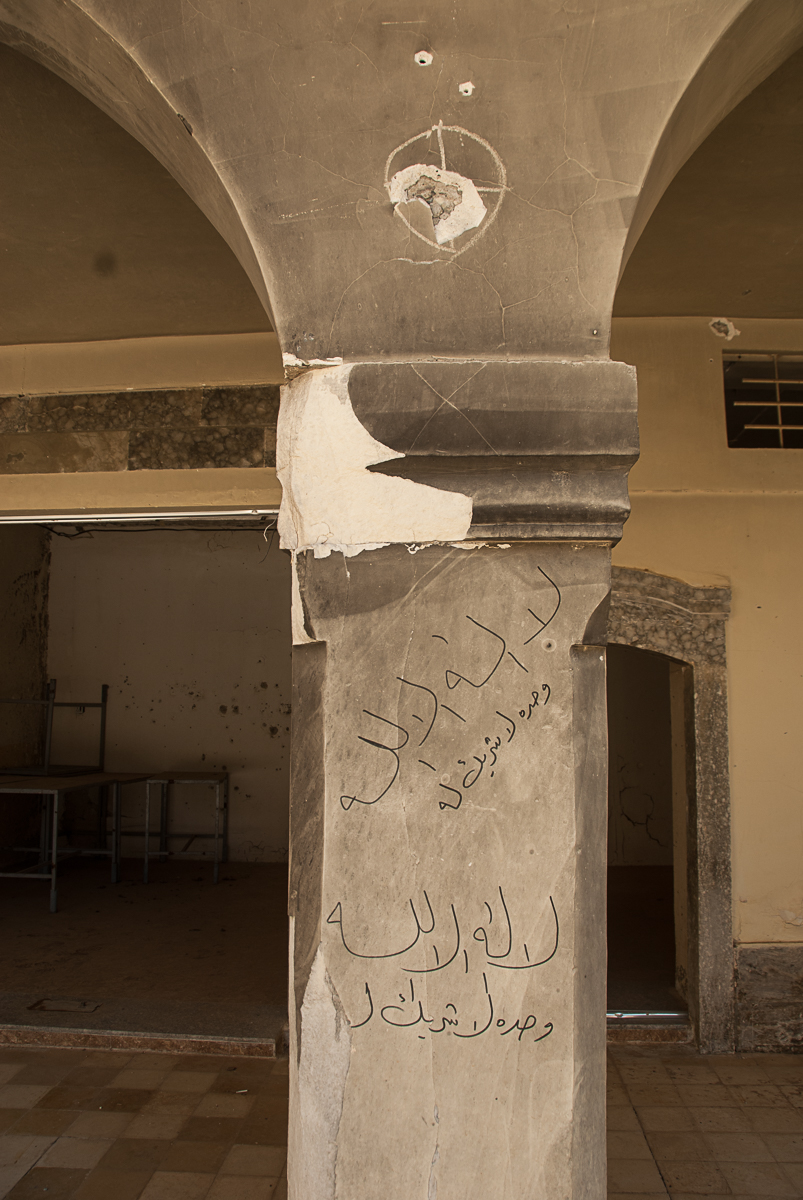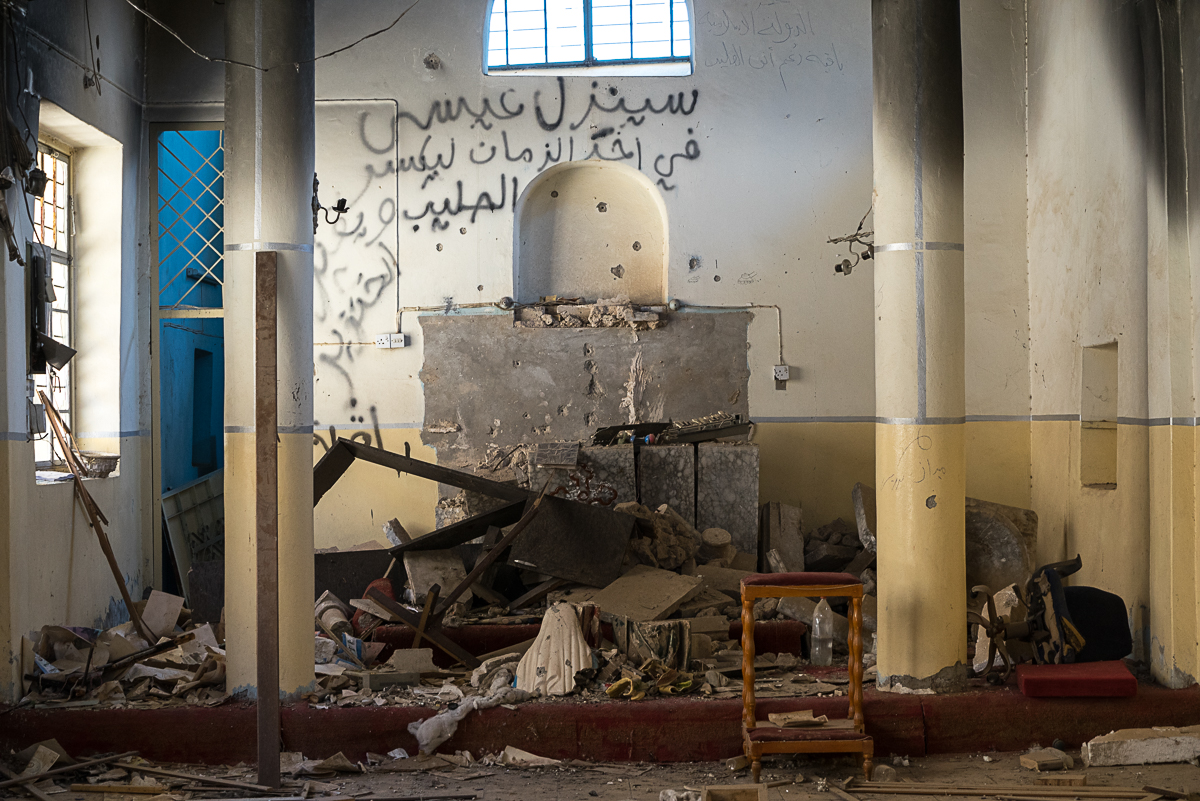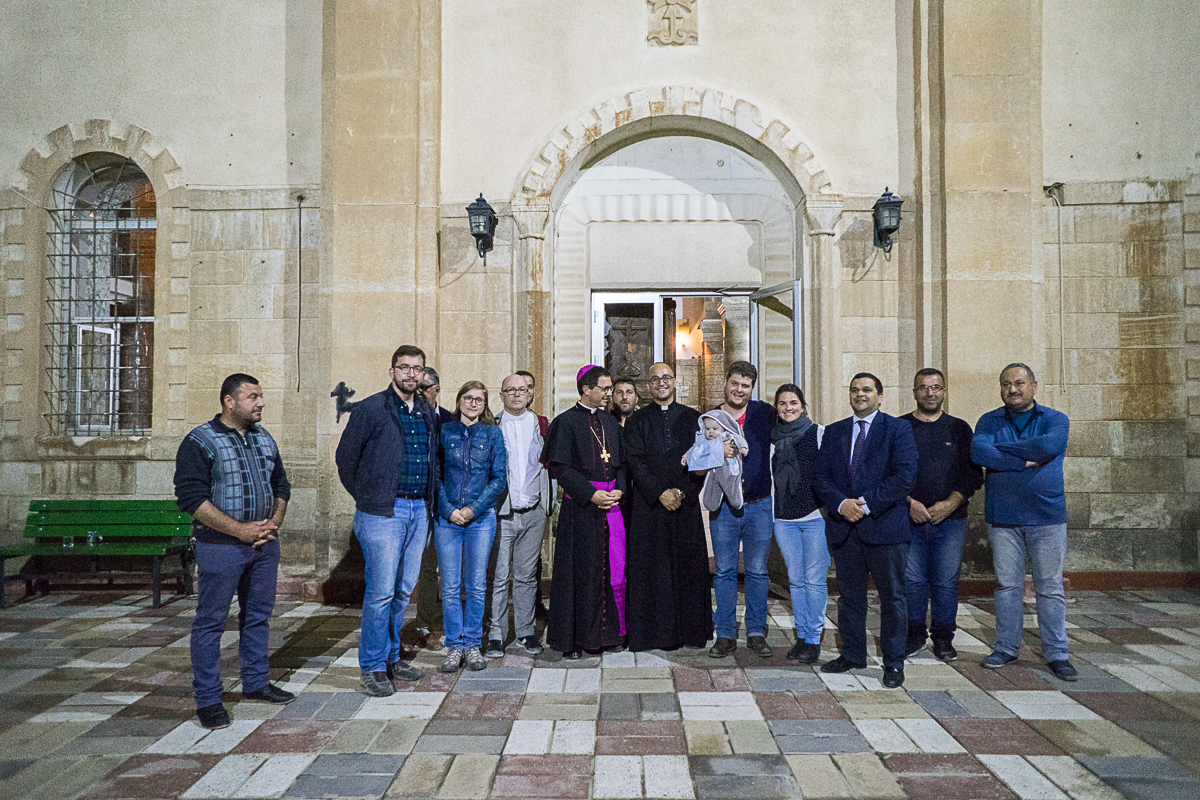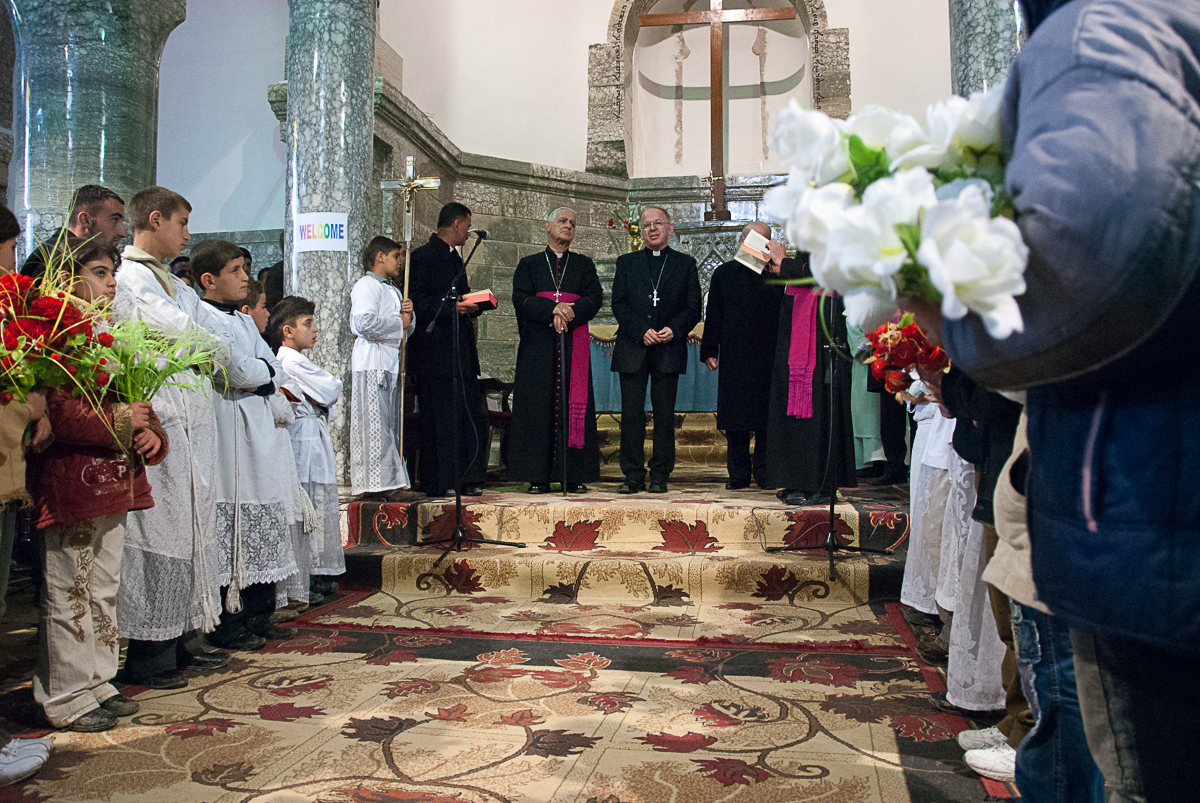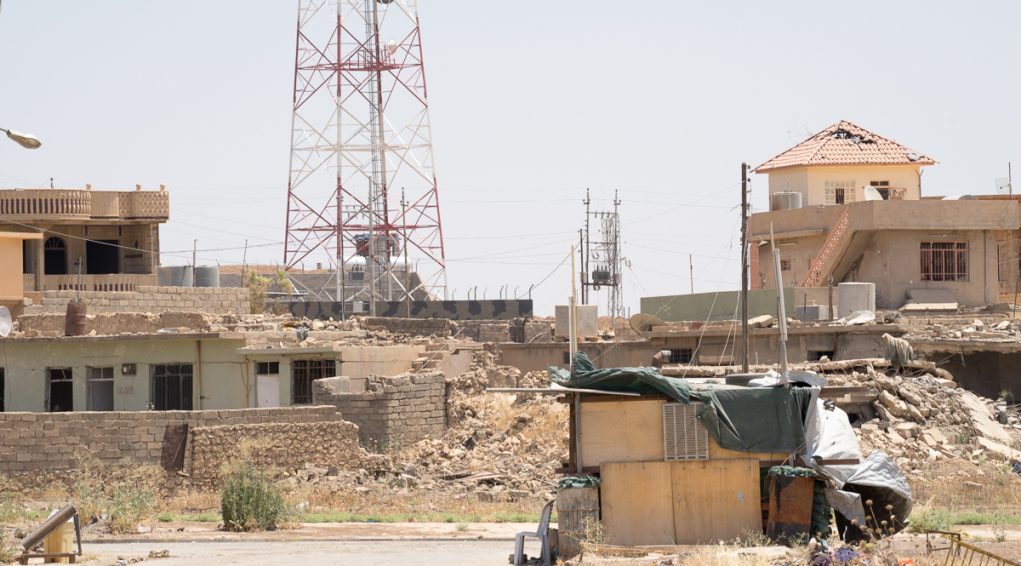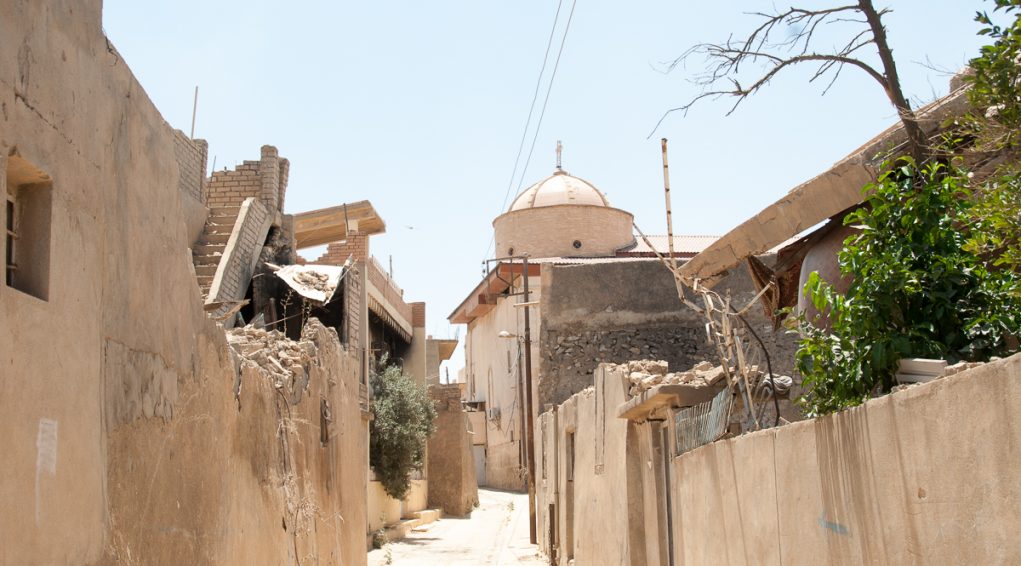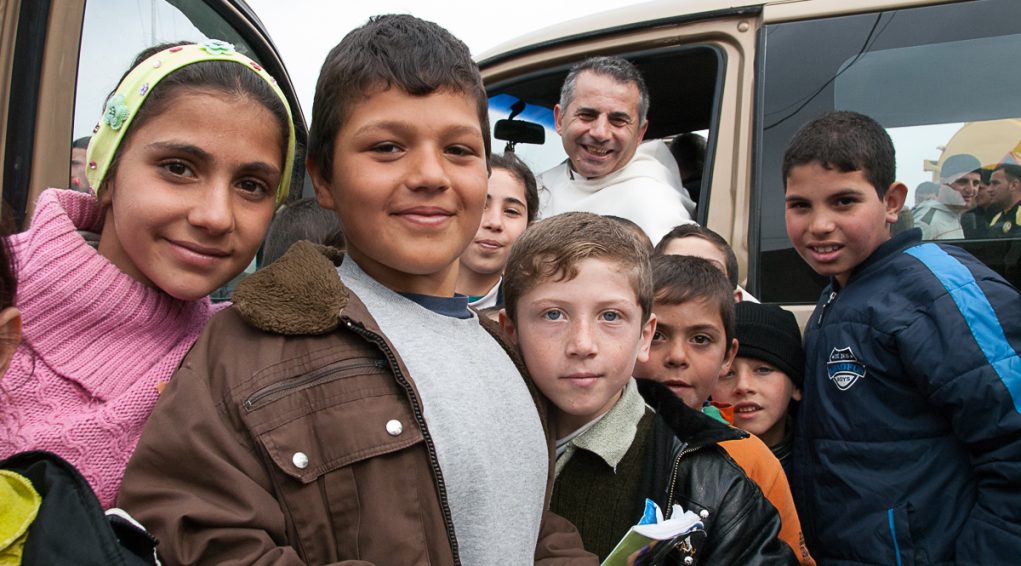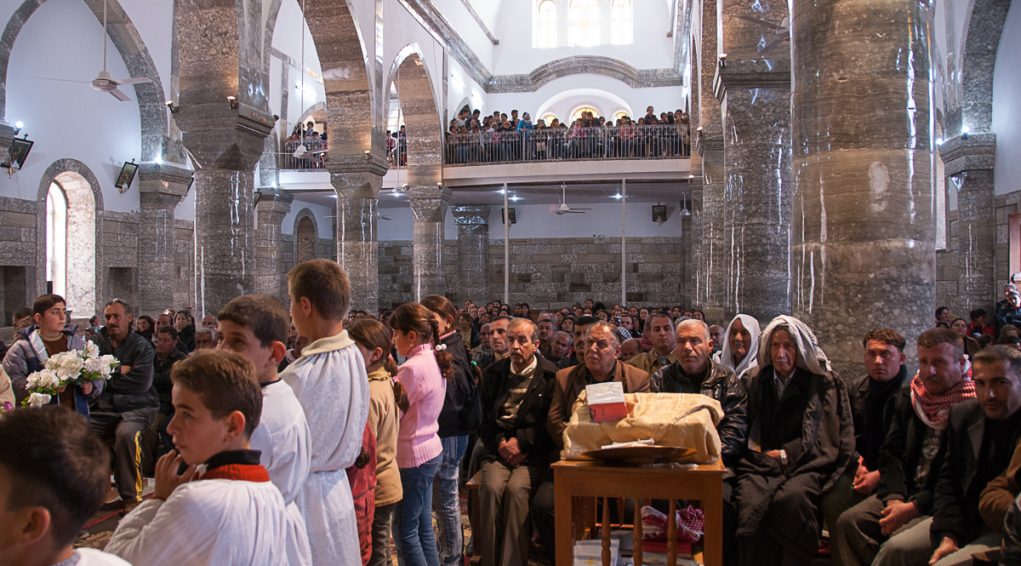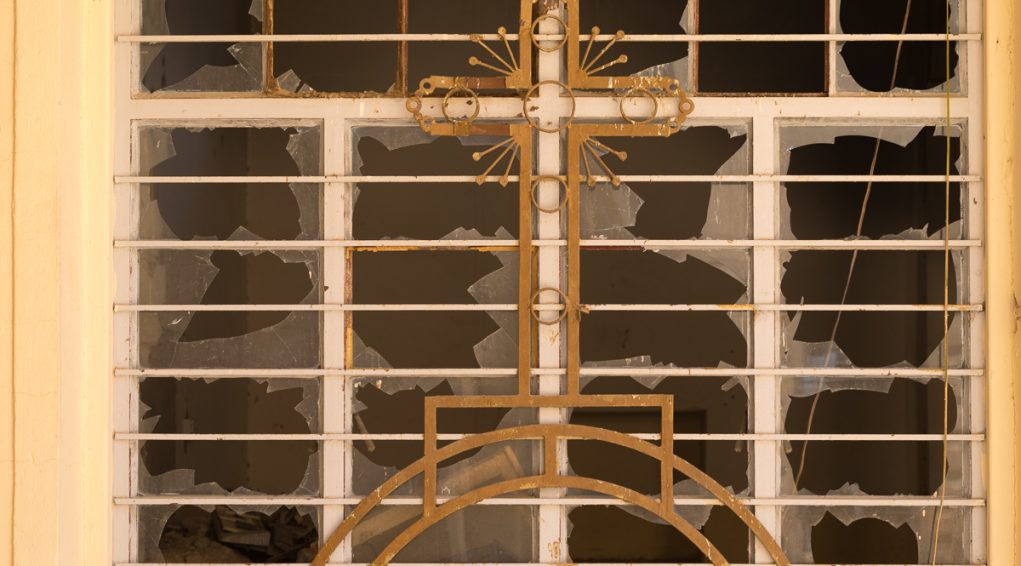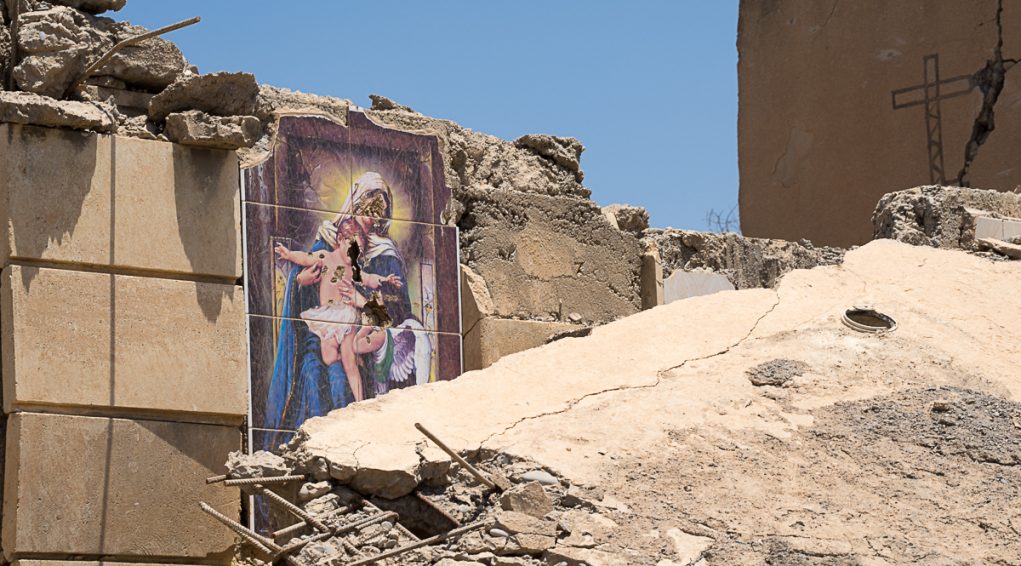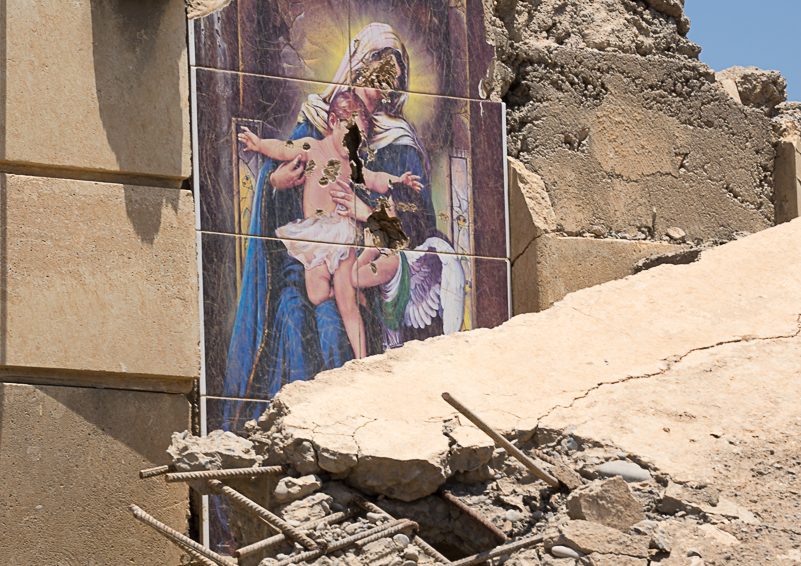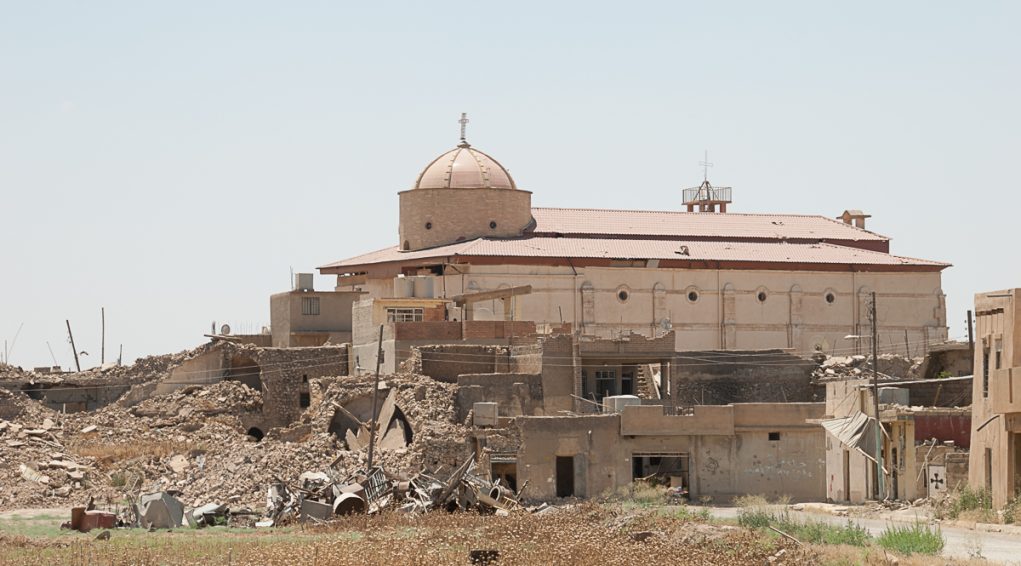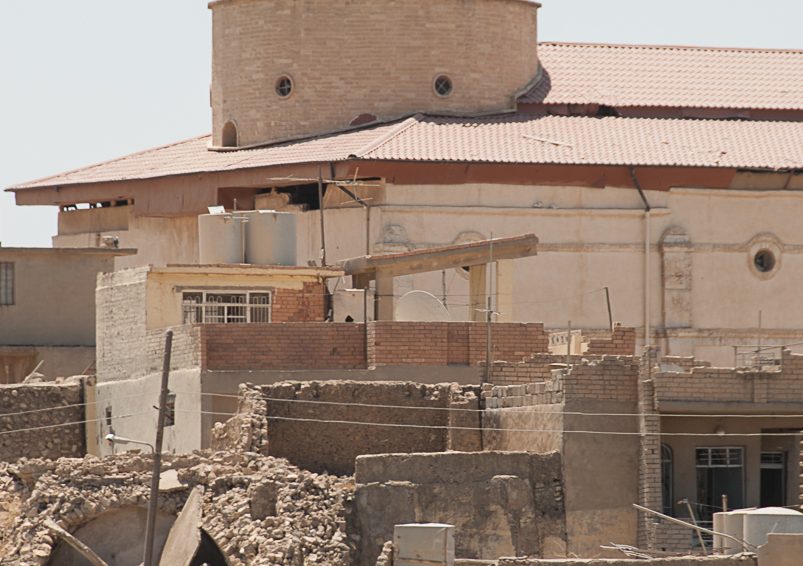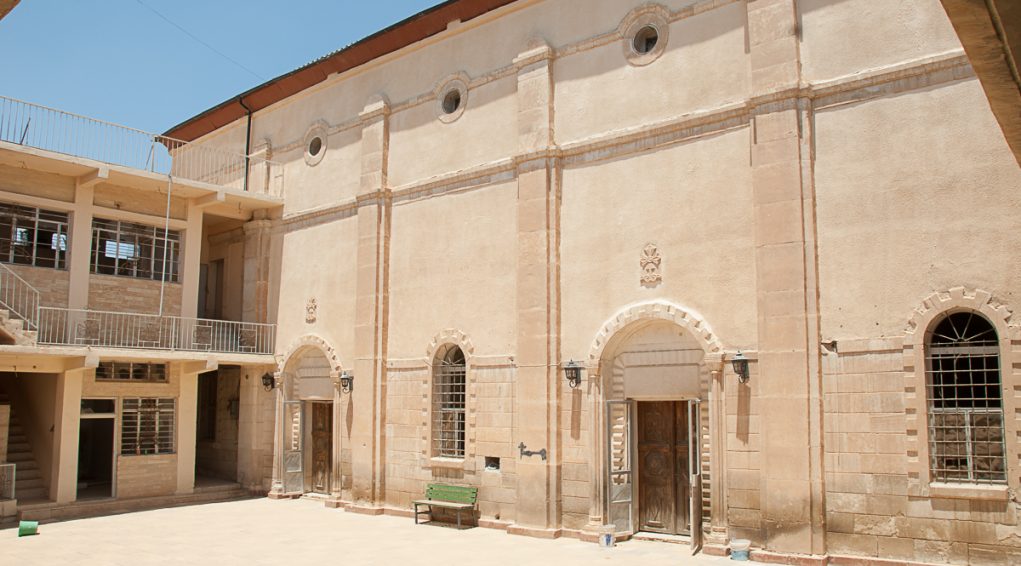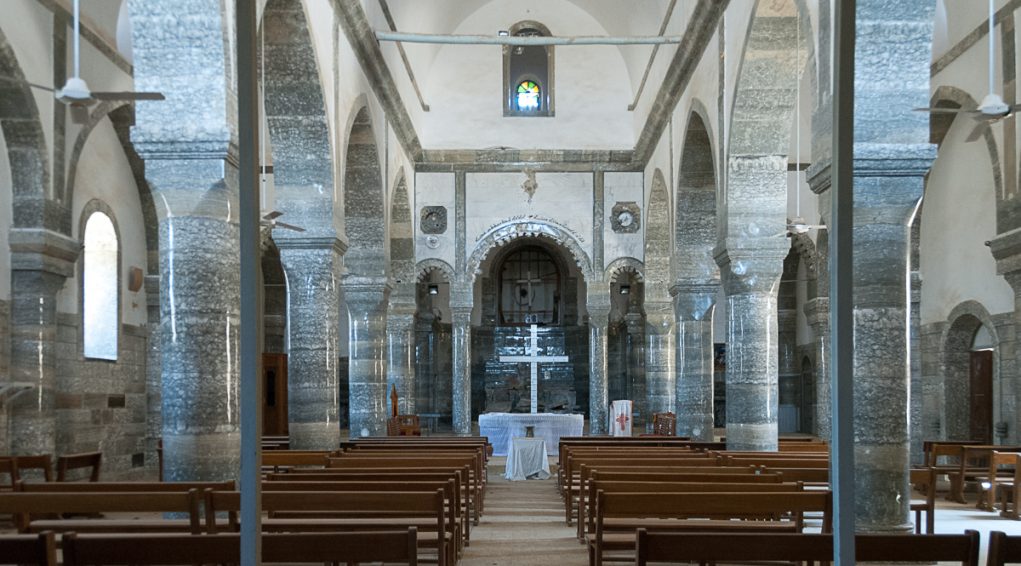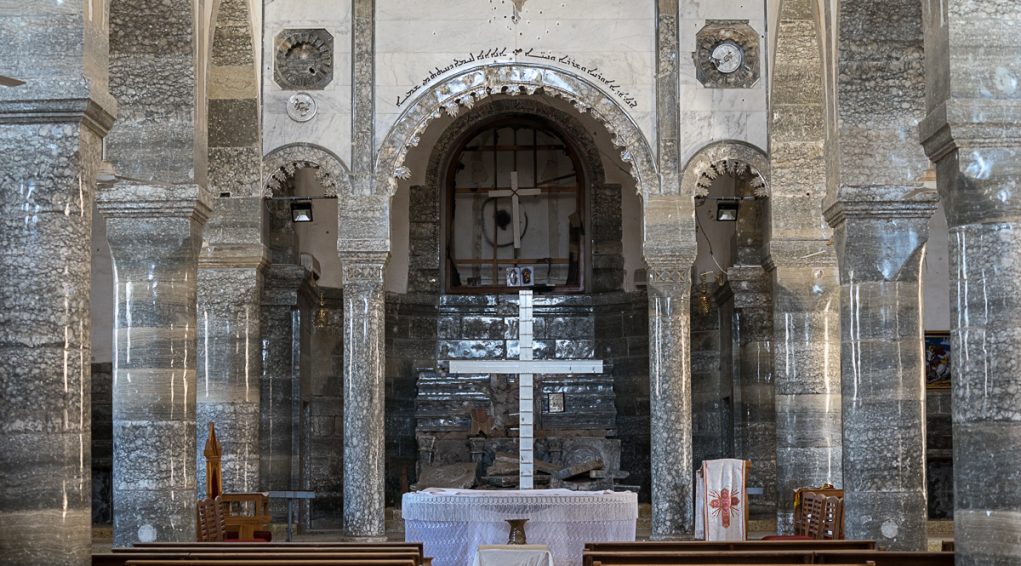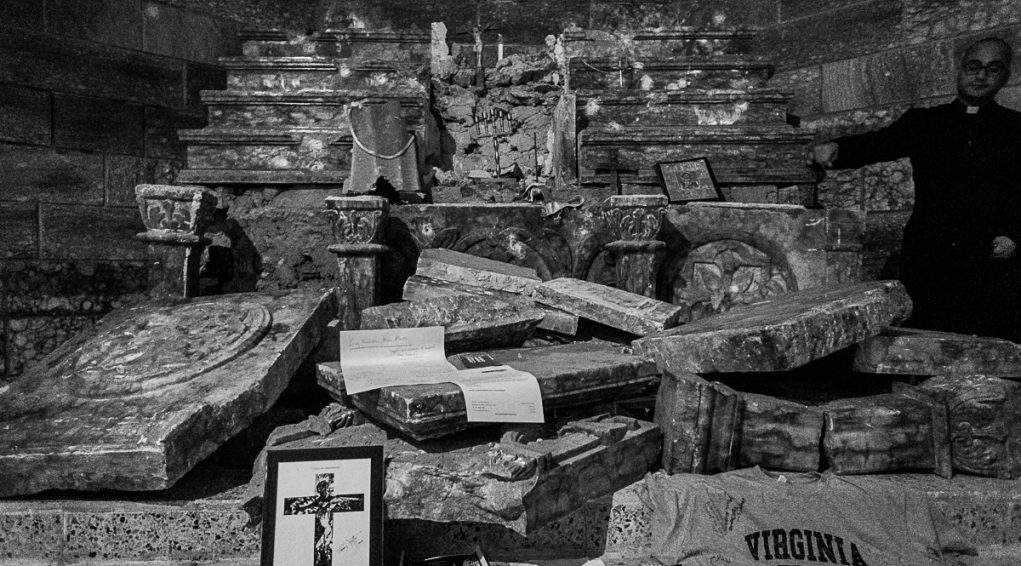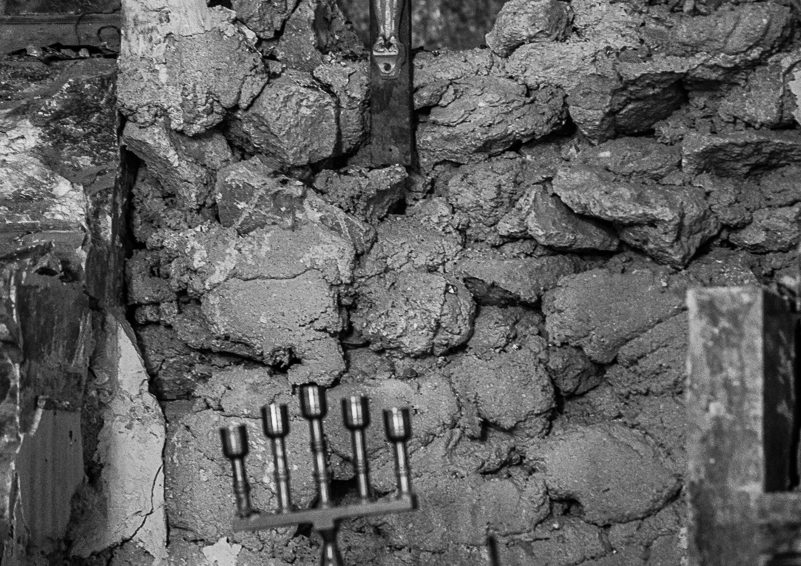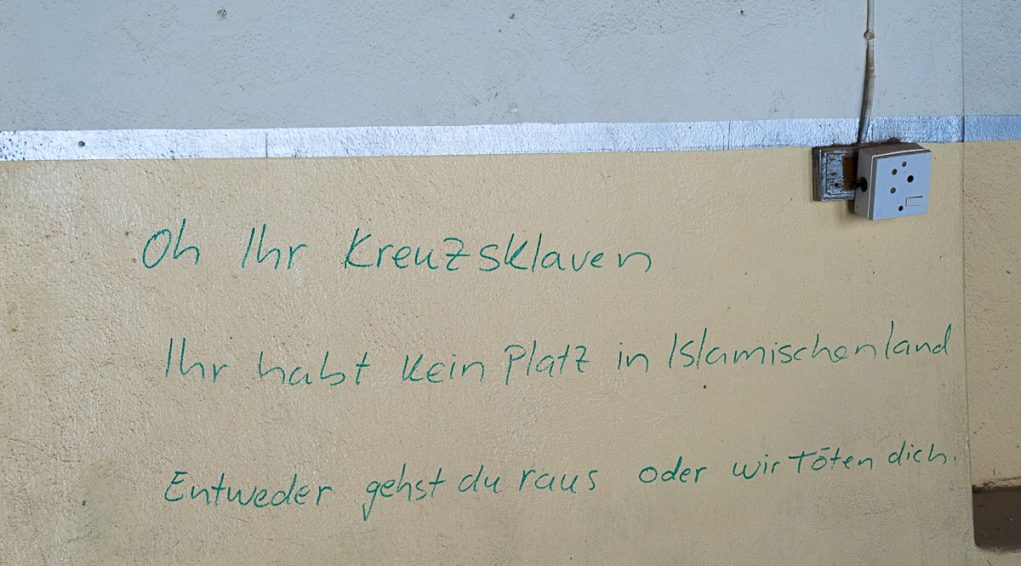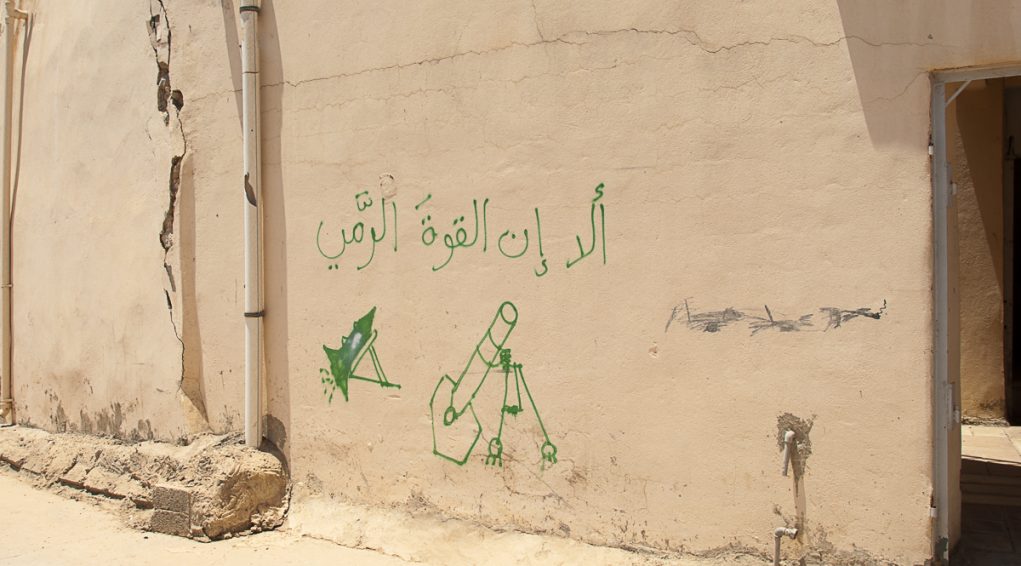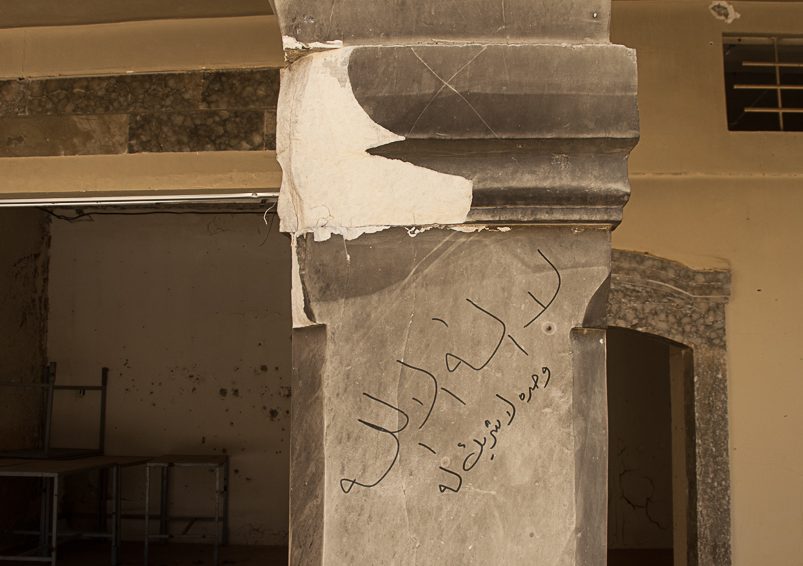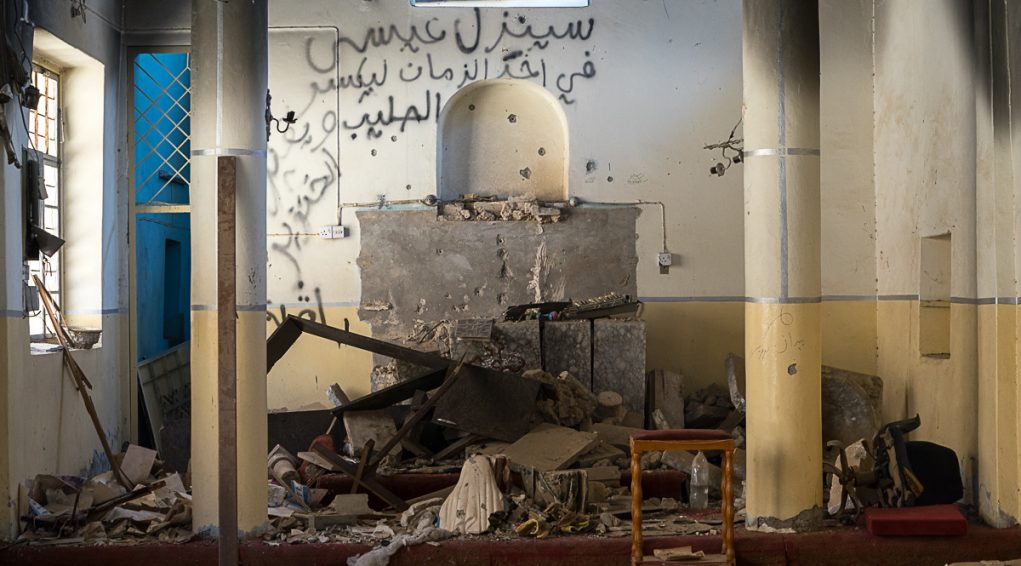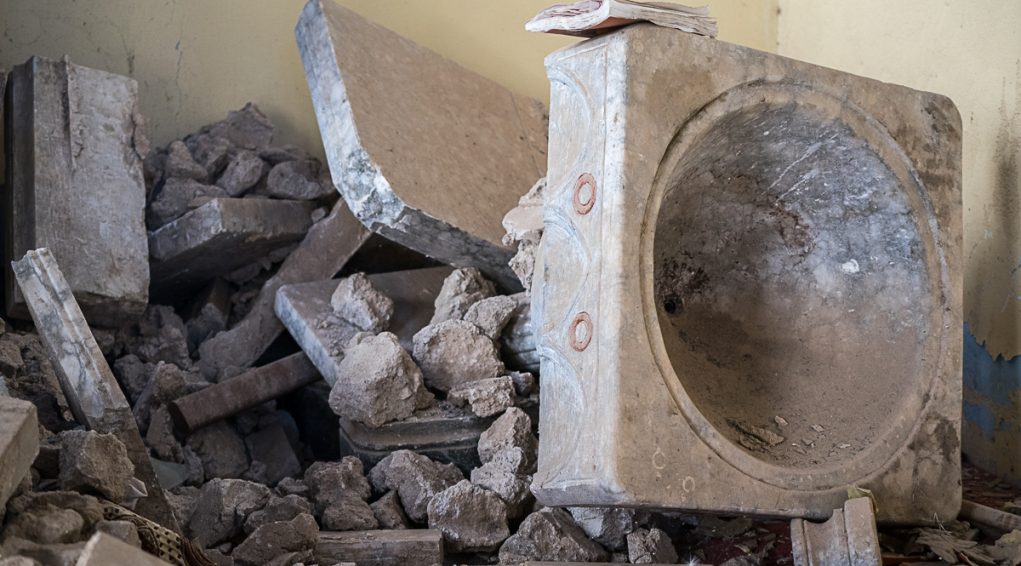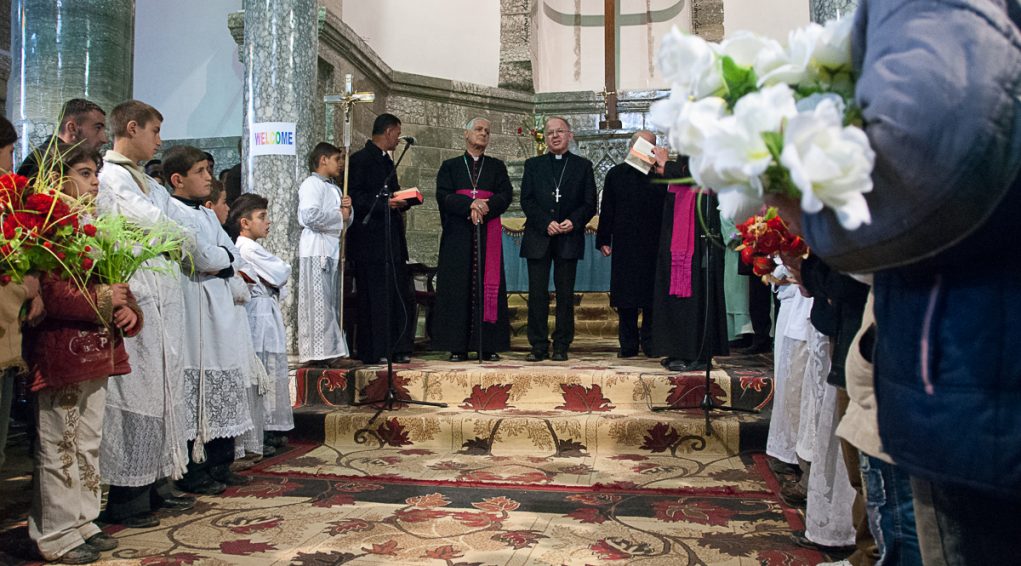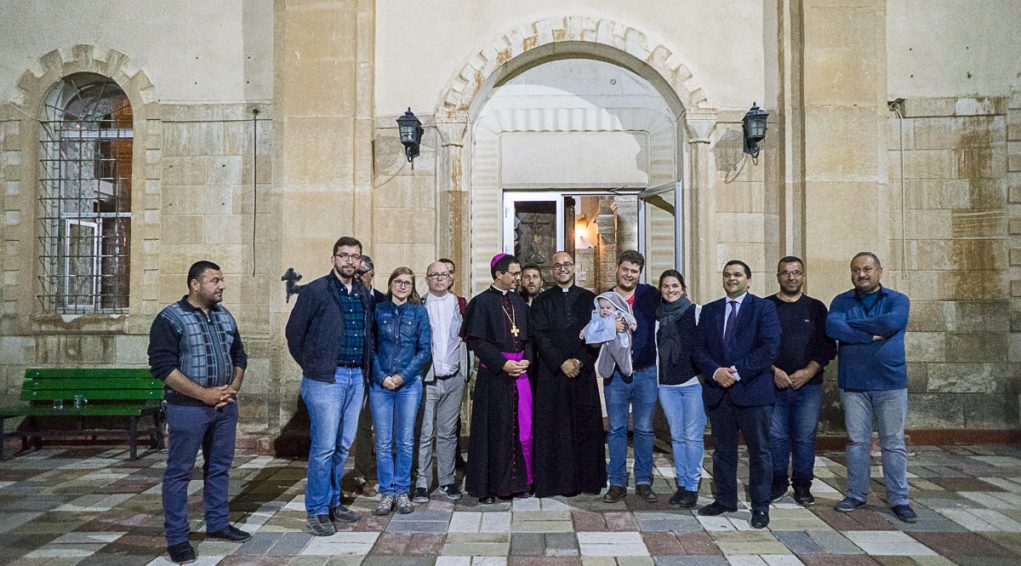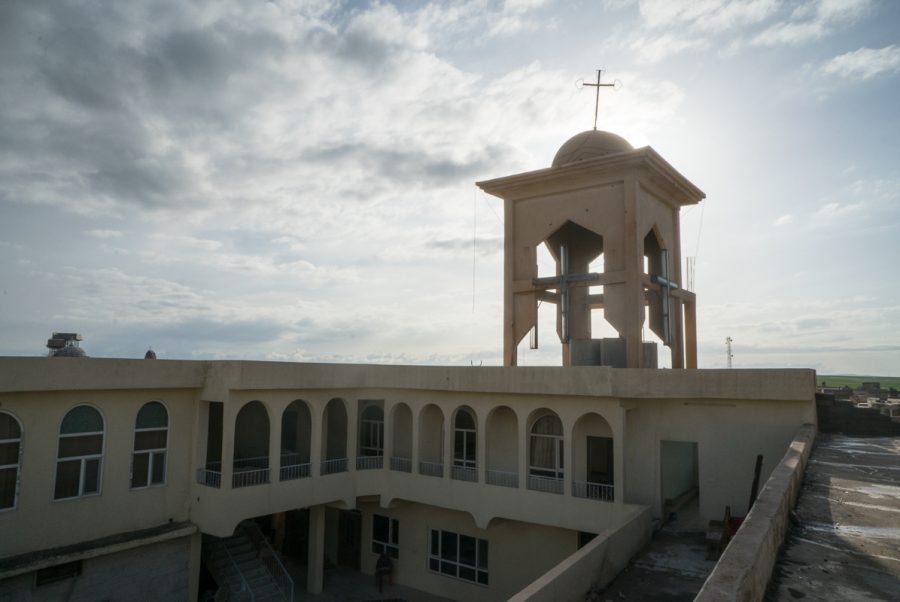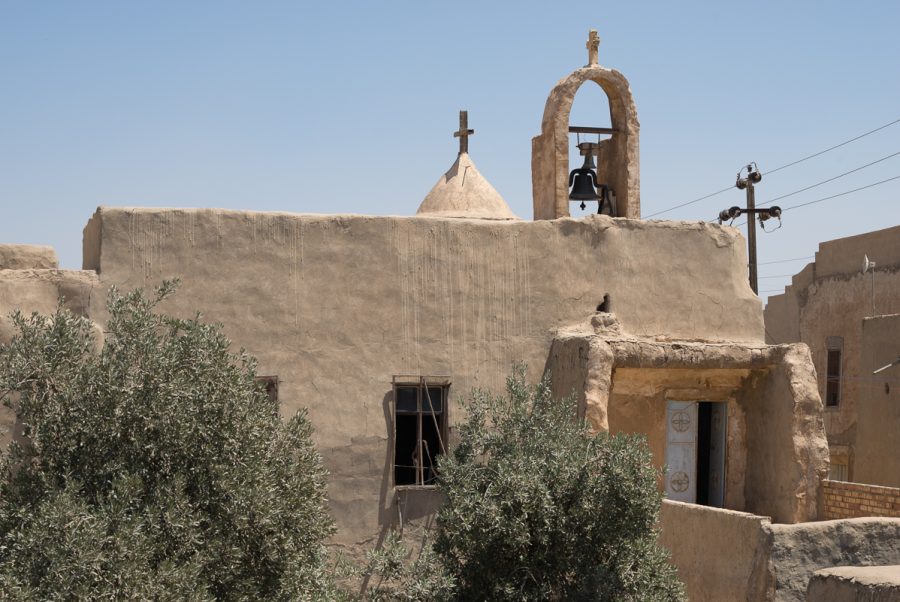The Mar Qouryakos Church in Batnaya
The Mar Qouryakos church in Batnaya is located at 36°32’18.83″N 43°07’24.52″E and 320 metres’ altitude.
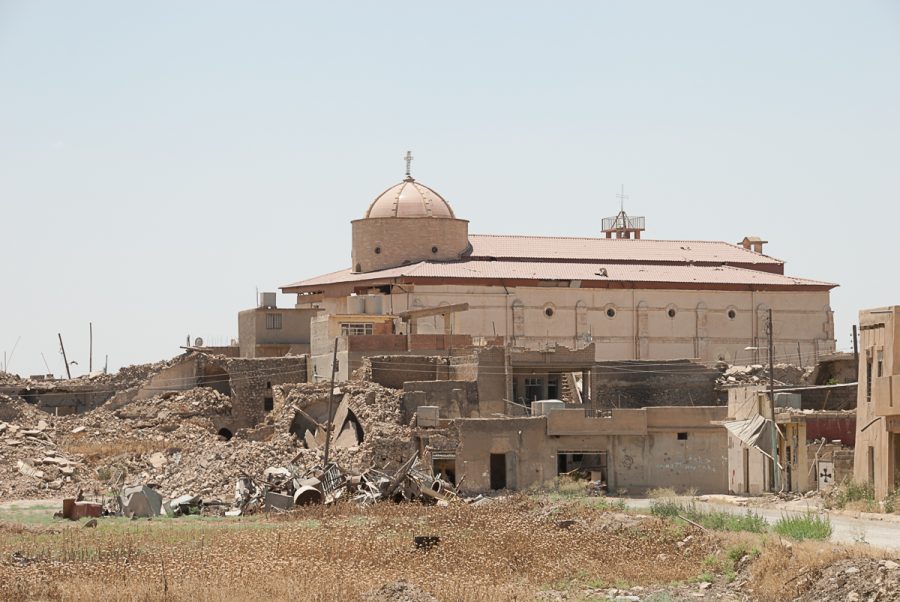
The 6,000 inhabitants of Batnaya were forced to leave their village in the night of 6th to 7th August to escape from ISIS. The fighting which took place there up until it was taken back on 20th October 2016 was incredibly intense. It left Batnaya in ruins. In this context, the preservation of the Mar Qouryakos church is almost miraculous, although the building bears the scars of this disaster.
The Mar Qouryaqos church is no doubt the most ancient in Batnaya. We know almost nothing about its ancient history. In 1944 it was quite simply destroyed… and rebuilt! It is a huge, elevated, imposing building.
| Pic : The Chaldean Mar Qouryakos church in Batnaya. June 2017 © Pascal Maguesyan / MESOPOTAMIA |
Location
The Mar Qouryakos church in Batnaya is located at 36°32’18.83″N 43°07’24.52″E and 320 metres’ altitude. Batnaya is located on the eastern bank of the Tigris, 25 km to the north of the city centre of Mosul, 5 km north of Tell Kaif (Tell Kepe) and 9 km to the south of Tell Eskoff (Telskuf).
Demographics of Batnaya
In the 18th century, in around 1767, Batnaya was home to 200 families, all Chaldean. In the 19th century, in 1852, G.P. Badger[1] counted 60 families. More surprisingly, the local figures of Abbot Martin number 900 inhabitants in 1867. In 1891, the geographer Vital Cuinet confirmed this demographic growth with 1,000 inhabitants[2]. In around 1961, when Jean-Maurice Fiey visited the town there were 3,104 inhabitants.[3] After the invasion by ISIS, the village had around 6,000 inhabitants. Batnaya was occupied for two years and was finally liberated on 6th October 2016, by the Kurdish peshmerga. Located on the front line, the village was practically entirely razed to the ground, so very few inhabitants have returned. In November 2018, only 15% had returned.
_______
[1] See G.P.Badger, “The Nestorians and their rituals”, London, Joseph Masters
[2] In La Turquie d’Asie -Tome 2, Ernest Leroux, 1891, p. 829
[3] Source “Assyrie chrétienne”, vol.II, Jean-Maurice Fiey, p. 376.
Toponymy
The name of the village of Batnaya is uncertain. An oral source indicates that it might mean the “country of those who have clouded corneas” due to corneal scarring, which would also explain the plaiting of reeds. The Assyriologist Jean-Maurice Fiey prefers the 7th century name “the village of Medes / Bét Madāyé” which according to him explains why Batnaya had a Yazidi population.[1]
_______
[1] Source “Assyrie chrétienne”, vol.II, Jean-Maurice Fiey, p. 377.
Fragments of Christian history
According to the tradition, Christianity entered the Nineveh plain at the end of the 4th century or the beginning of the 5th century. More likely, sources argue that evangelisation began in the 7th century. The Christianisation of Batnaya was also led by the monk Abraham (Awrāha / Oraha), a contemporary of the Patriarch of the Church of the East, Ishoʿyahb II (628-645). In the place where the holy man lived in his hermitage there is still an abandoned monastery named Mar Awrāha, 1 km north-east of Batnaya, which was occupied and destroyed by ISIS, but which can now once again be visited.
Throughout the centuries, the Christian cities of Mesopotamia sustained damage for a variety of reasons. In 1235, Bar Hebraeus, the Syrian-Orthodox Maphrian, scholar and writer, recounts the passage and destruction of the Mongols. In 1743, the Persian Emperor Nâdir Châh also attacked, pillaged and ruined the whole region, including Batnaya. We also know that there were several outbreaks of the plague in the Nineveh plain, in 1737/38, 1773 and 1828.
Despite this devastation, the village survived and remained exclusively Christian, moving from the Church of the East (autocephalous) to the Chaldean Church (in communion with Rome) in the 18th century.
Abandoned and with no military protection against the onslaught of ISIS, the 6,000 villagers in Batnaya were forced to flee their homes in the night of 6th to 7th August 2014. They went into exile, heading for Erbil in Iraqi Kurdistan.
The fighting which opposed the Islamist and organised crime groups linked to ISIS and the Kurdish peshmerga up until the village was taken back on 20th October 2016, was extremely intense. It left the village in ruins with 95% of the houses, many of which were centuries old, destroyed. In this context, the preservation of the Mar Qouryakos church is almost miraculous, although the imposing building bears the scars of this disaster.
About Mar Qouryakos
According to the tradition, Mar Kuryakos (also known as Saint Cyricus) was a child martyr, in the 4th century, under the reign of the Persian Sassanian King Shapur II, tortured for having refused to abandon the Christian faith taught by his devout mother Julitta (or Eulita).
His feast day is July 15th Mar Kuryakos is appealed to in all the Christian East. Many Assyrian-Chaldean and Armenian churches bear the name of the saint child in Iraq and in Turkey.
History of the Mar Qouryakos church in Batnaya
With the exception of the hermitage of Mar Awrāha, a local 7th century evangeliser, Mar Qouryaqos is no doubt the most ancient church in Batnaya. We know almost nothing about its ancient history. In 1944 it was quite simply destroyed… then rebuilt!
This ancient church, visited by the Assyriologist Jean-Maurice Fiey, had three naves. “The door of the high altar was restored by the Patriarch Audo. The door of the baptistery, with a double lintel, appeared more ancient, dating perhaps from the 1744 restoration [after the Persian destruction]. The threshold of this door was composed of an ancient stone, probably a gravestone, of which just a few engraved letters are visible above ground.”[1]Opposite the ancient Mar Qouryakos church, on the other side of an interior courtyard which probably contained tombs, there was a secondary church named after the Virgin Mary “built in around 1866”[2] twelve years after the dogma of the Immaculate Conception was proclaimed, which in Iraq is designated as the All Pure (al Tahira in Arabic).
In this ancient church, which in all probability was also a monastery, only one single manuscript was left, a grammar by Elie of Nisibe, dating from 1744, conserved in the library of the Chaldean Patriarch.[3]
_______
[1] Source “Assyrie chrétienne”, vol.II, Jean-Maurice Fiey, p. 378.
[2] Source “Assyrie chrétienne”, vol.II, Jean-Maurice Fiey, p. 379.
[3] Id.
Description of the Mar Qouryakos church in Batnaya
The Mar Qouryakos church in Batnaya is a massive, elevated, imposing building. The religious space is laid out around an internal courtyard. On one side is the Mar Qouryakos church itself and on the other side the al-Tahira church.
The Mar Qouryakos church is a basilica-style, triple nave church with five bays. The building is supported by thick freestanding pillars made of Mosul marble, joined with a series of pointed arches.
The nave and side aisles are mounted with semi-circular barrel vaults. The hip roof is higher in the middle and lower on the sides. Mounted above the sanctuary is a hemispherical dome with a large drum perforated with several small windows.
The slightly elevated sanctuary, open and visible to the entire congregation, is accessed after passing through a royal door formed with a triple arch with polylobed arches.
A high altar with marble steps almost backs onto the wall of the apse chapel. The tabernacle is located in the centre. A liturgical table, under the arch of the sanctuary is used by the priests to celebrate services facing the congregation.
A bell tower which is not particularly aesthetically pleasing stands to one side of the building but is detached.
Mar Qouryakos in Batnaya: a martyred church
The Mar Qouryakos church in Batnaya was ransacked by ISIS. The high altar was almost entirely destroyed. The desecration focused on the tabernacle which was ripped down and smashed to pieces.
In the church and the internal courtyard, hateful, threatening graffiti was still visible in April and June 2017. Written in Arabic and German, they reveal the presence of European fighters in ISIS’ ranks.
On the other side of the courtyard, the single nave al-Tahira church was entirely destroyed. The jihadist occupiers pulverised everything they found in the sanctuary.
Fraternity at Mar Qouryakos
In February 2008, the Pax Christi delegation led by Monsignor Marc Stenger came to Batnaya and visited Mar Qouryakos, listening to the testimony of the villagers, deprived of water, electricity, employment, and living under the threat of being kidnapped and held to ransom. Six years before ISIS the situation was already very difficult.
On 14th April 2017, five months after the liberation of the village, a delegation from the diocese of Lyon, led by the auxiliary bishop Monsignor Emmanuel Gobilliard with the Fondation Saint-Irénée, visited the Mar Qouryakos church in Batnaya.
The overall impression was of a ghost town. In the abandoned Mar Qouryakos church, the vision of the dynamited high altar in the dark was chilling.
Since then, the Mar Qouryakos church, the courtyard and the al-Tahira church have been cleaned and renovated. Several services have been held including Easter mass on 16th April 2017.
Monument's gallery
Monuments
Nearby
Help us preserve the monuments' memory
Family pictures, videos, records, share your documents to make the site live!
I contribute
